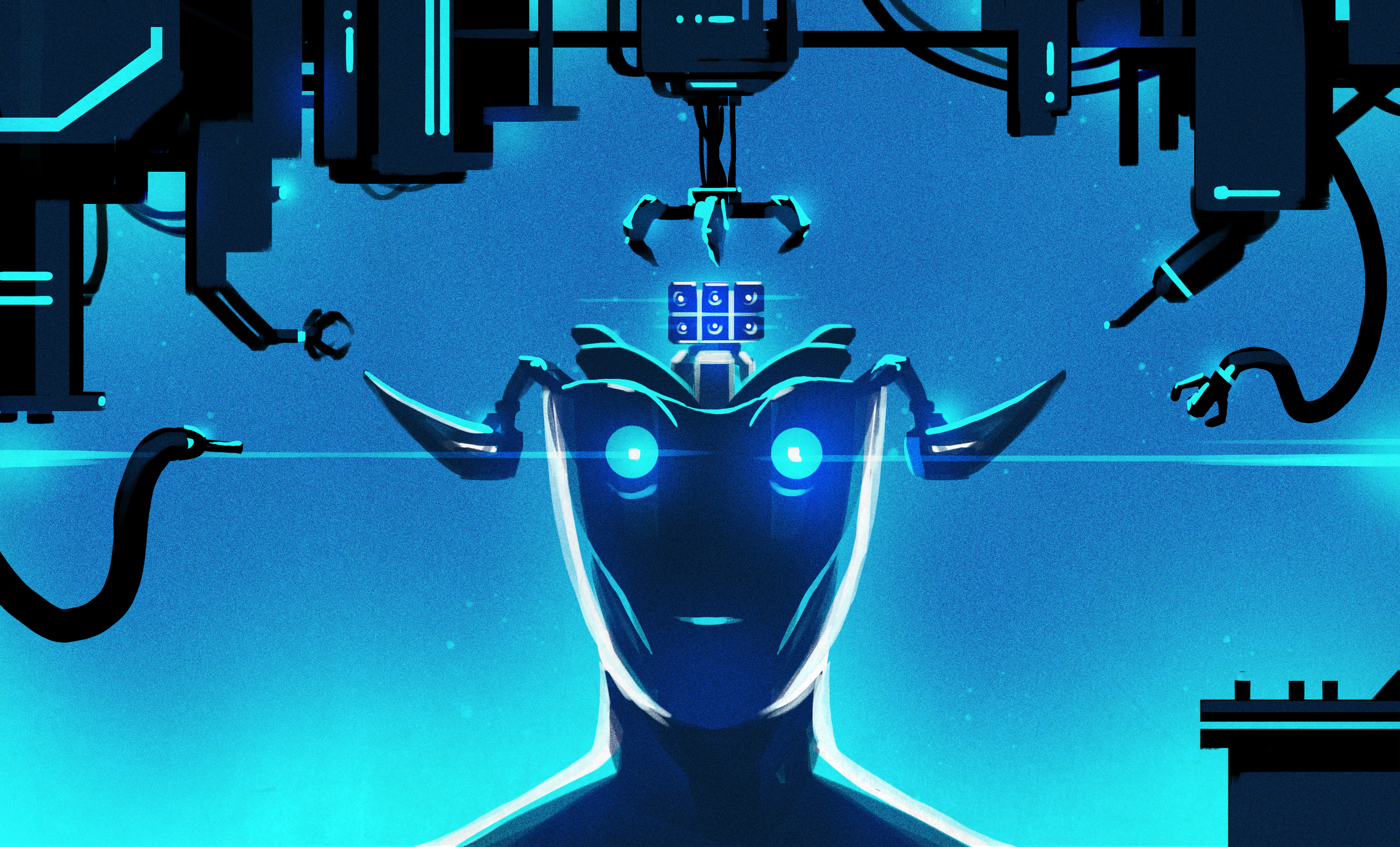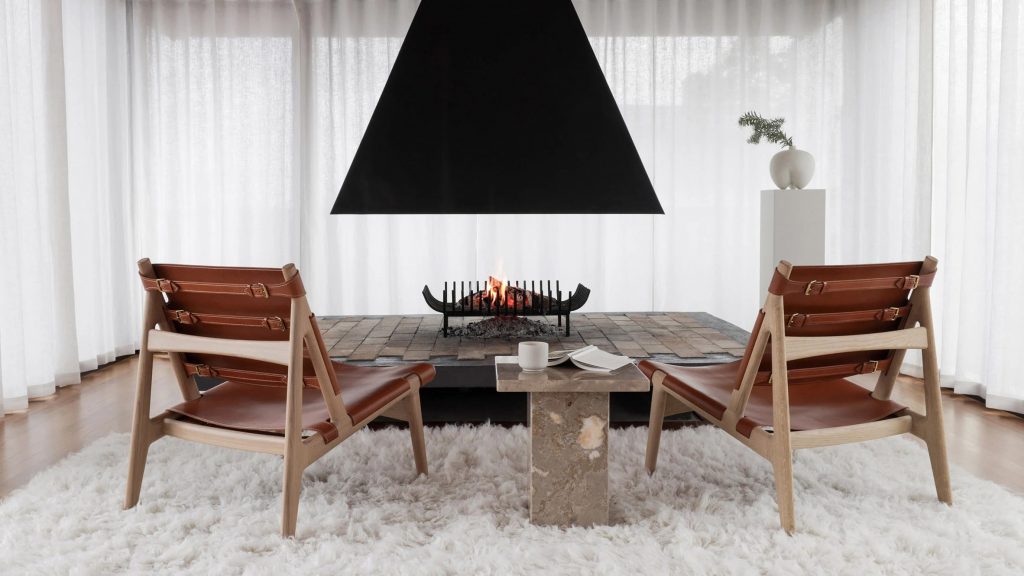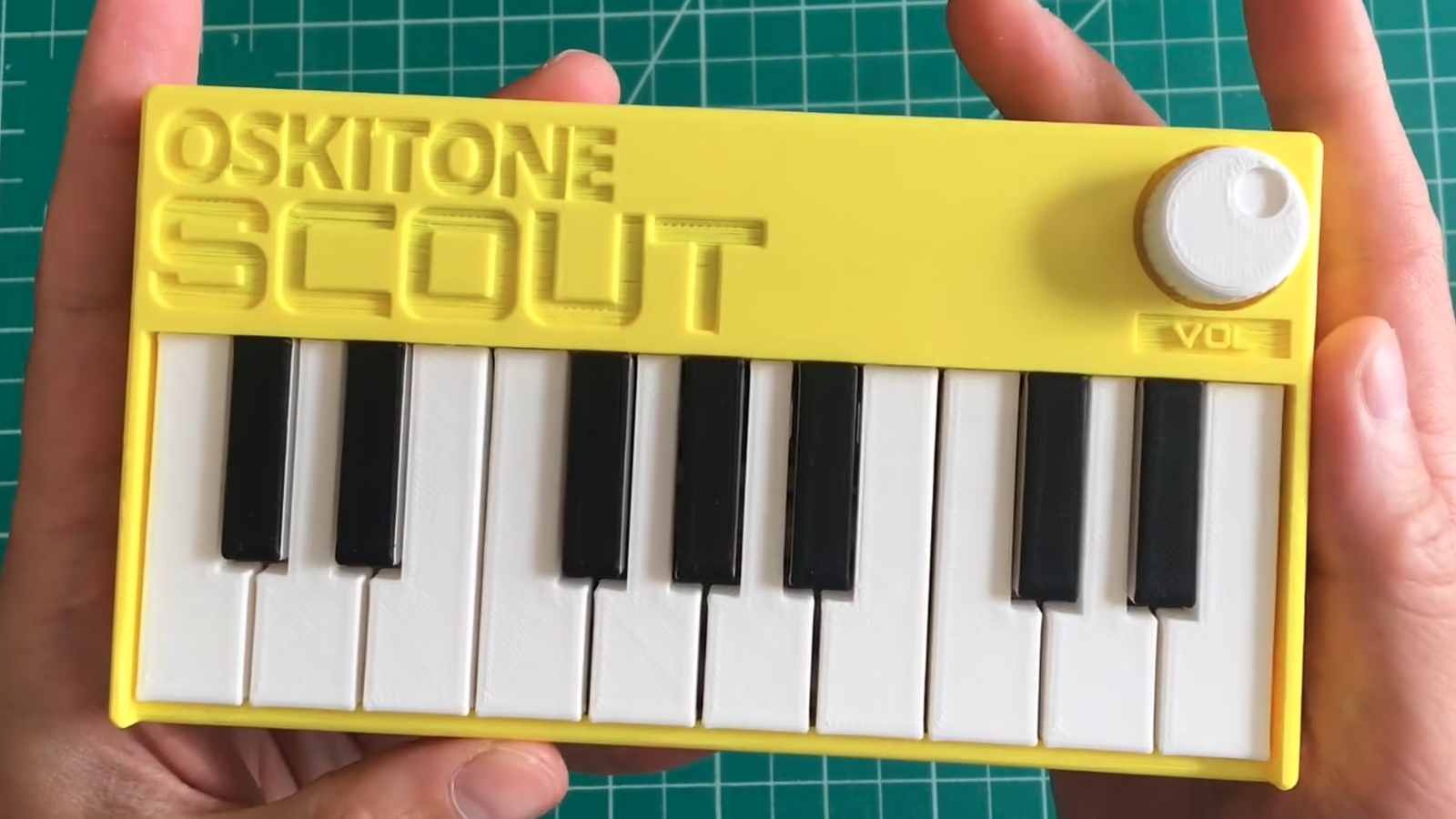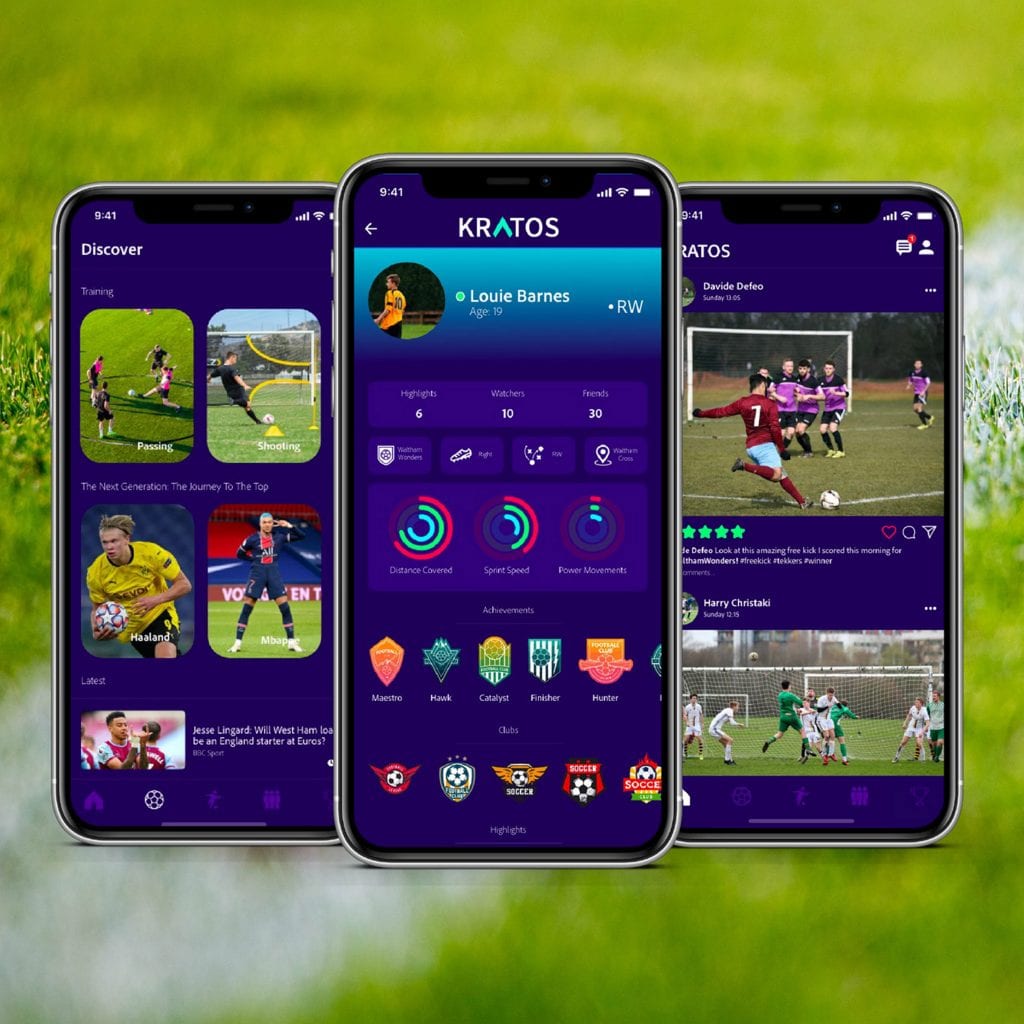#productdesign

FYI: For anyone displaced from #DevOps #engineering. or in the mood to pitch in with #ProductDesign on a new and growing platform in another corner of the Fediverse:
Mastodon is Hiring
#Mastodon For users, longtime &/or flooding in from #twitter, here's a reflection of the growth and focus on improving experience.
4 Likes
1 Shares
Ohhcean sex toys are made from recycled ocean plastic
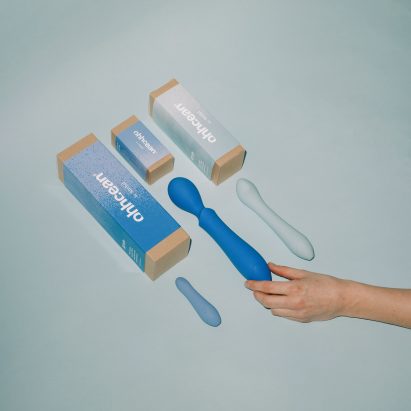
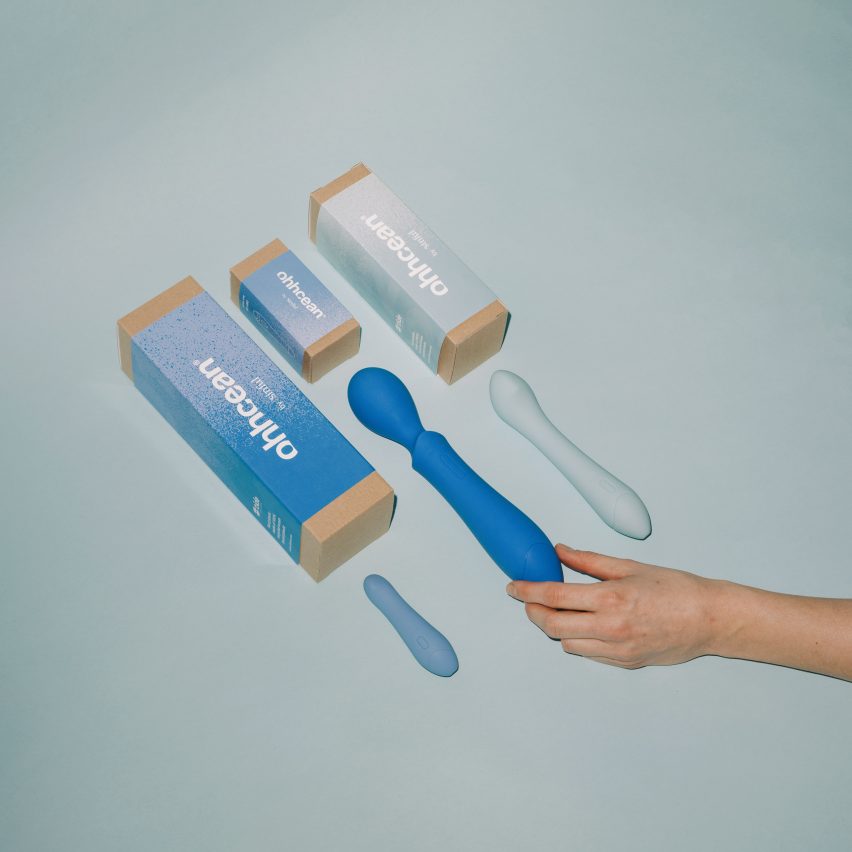
Danish brand Sinful has created a range of three sex toys using ocean plastic collected in Southeast Asia.
The Ohhcean collection comprises a wand and two vibrators — all made entirely from ocean-bound plastic. A thin layer of silicone covers the products to make them waterproof and pleasurable.
"The question was how to take something that already exists and put it to new use?" Mathilde Mackowski, co-owner of Sinful told Dezeen.
"The answer for us, at this moment, was ocean-bound plastic – we want to focus on different ways to approach production and think in new ways concerning material," she said.
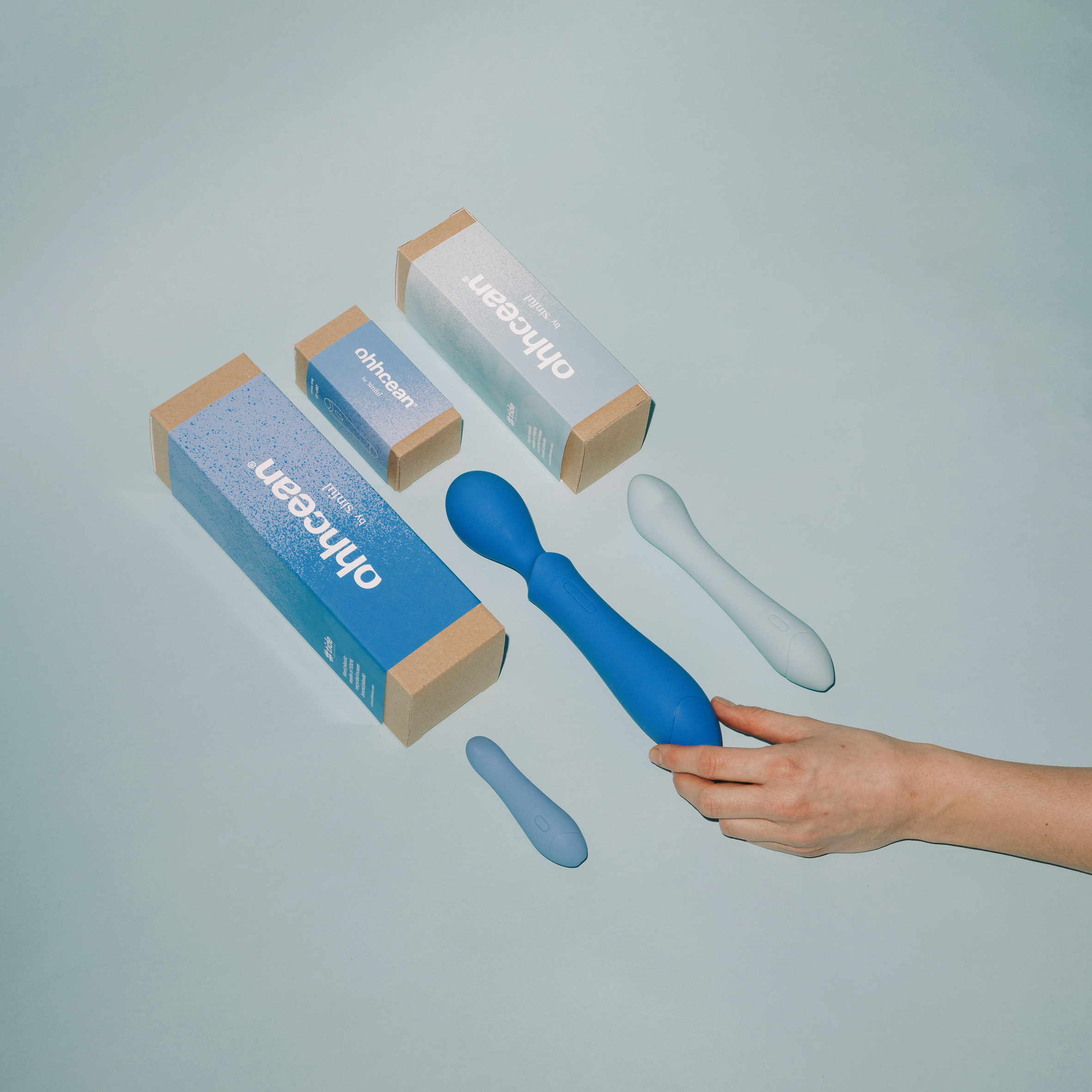 Ohhcean is a range of vibrators and wands made from ocean plastic
Ohhcean is a range of vibrators and wands made from ocean plastic
The brand worked with Tide, a Swiss manufacturing company that turns waste plastic into products, to create the Ohhcean range.
In collaboration with local fishermen, Tide sources thermoplastic polyethene terephthalate (PET) plastic from shorelines around oceans, streams and lakes in Thailand.
For Ohhcean, the company collected plastic bottle lids that were then washed and shredded into small pieces before being processed using renewable energy.
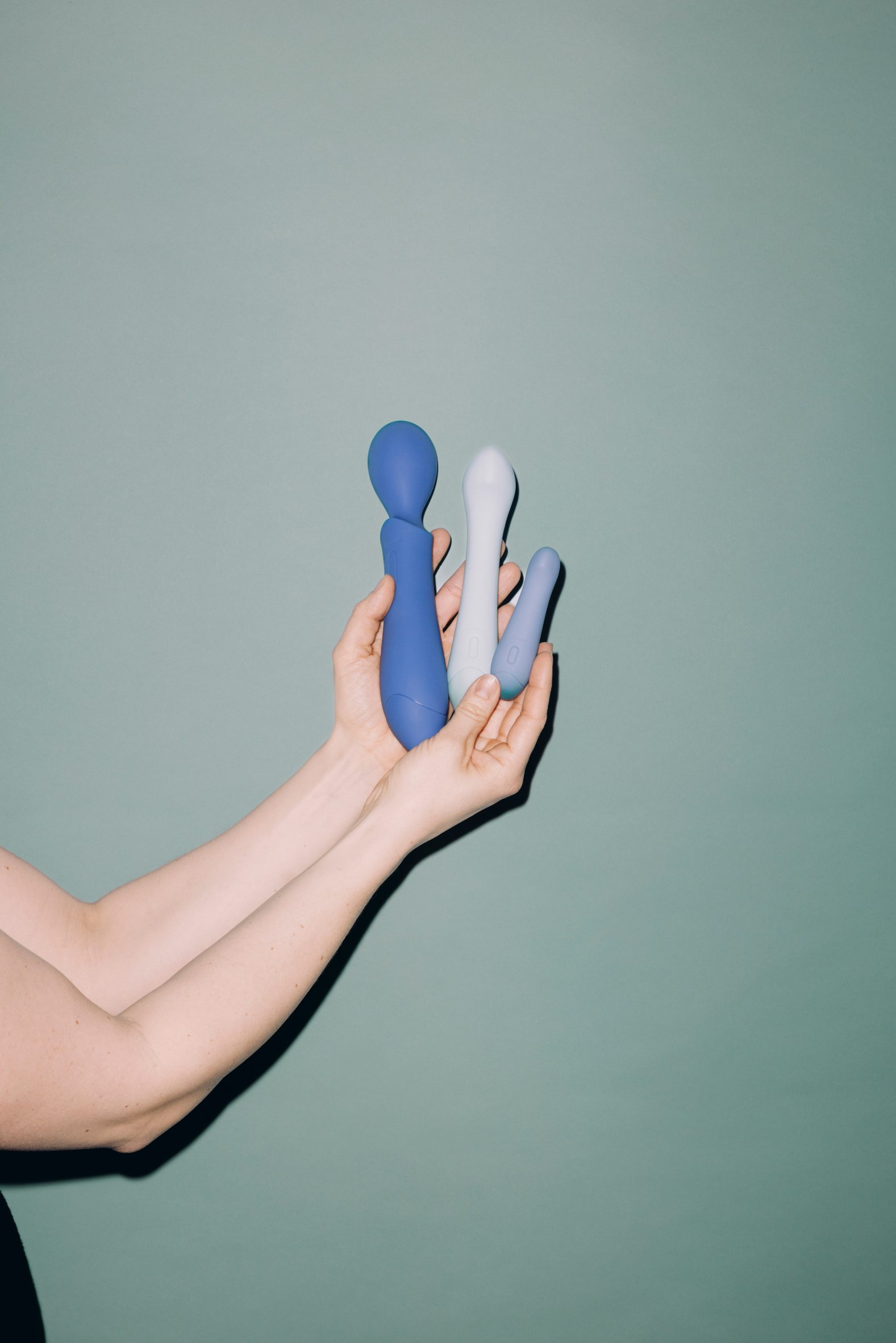 The sex toys come in aqua colours
The sex toys come in aqua colours
The resulting sex toys – a magic wand, vibrator and body massager – are available in a variety of hues, from sea green to royal blue.
As well as being made from natural materials, the sex toys have an organic look, with curved shapes and a smooth feel. They are all fully rechargeable and the vibrators come with seven different vibration patterns.
"The ocean has been our inspiration from day one so naturally, we've been influenced by soft shapes," explained Mackowski. "The organic meeting of the waves when they clash and the curves of a drop."
[ 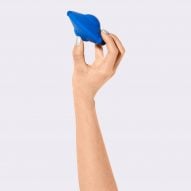
Read:
Sextech startups abandon the "intimidating" penis-shaped vibrator
](https://www.dezeen.com/2019/03/12/minimal-sex-toys-genderless-sextech-startups/)
Mackowski embarked on creating the range after noticing that there was nothing available on the market that was made fully from recycled plastic.
"The ocean plastics emergency has never been so widely reported, and rethinking plastic production within the sex toy industry had to arrive sooner or later," she said.
"We just weren't ready to wait for anyone else to get moving," she added.
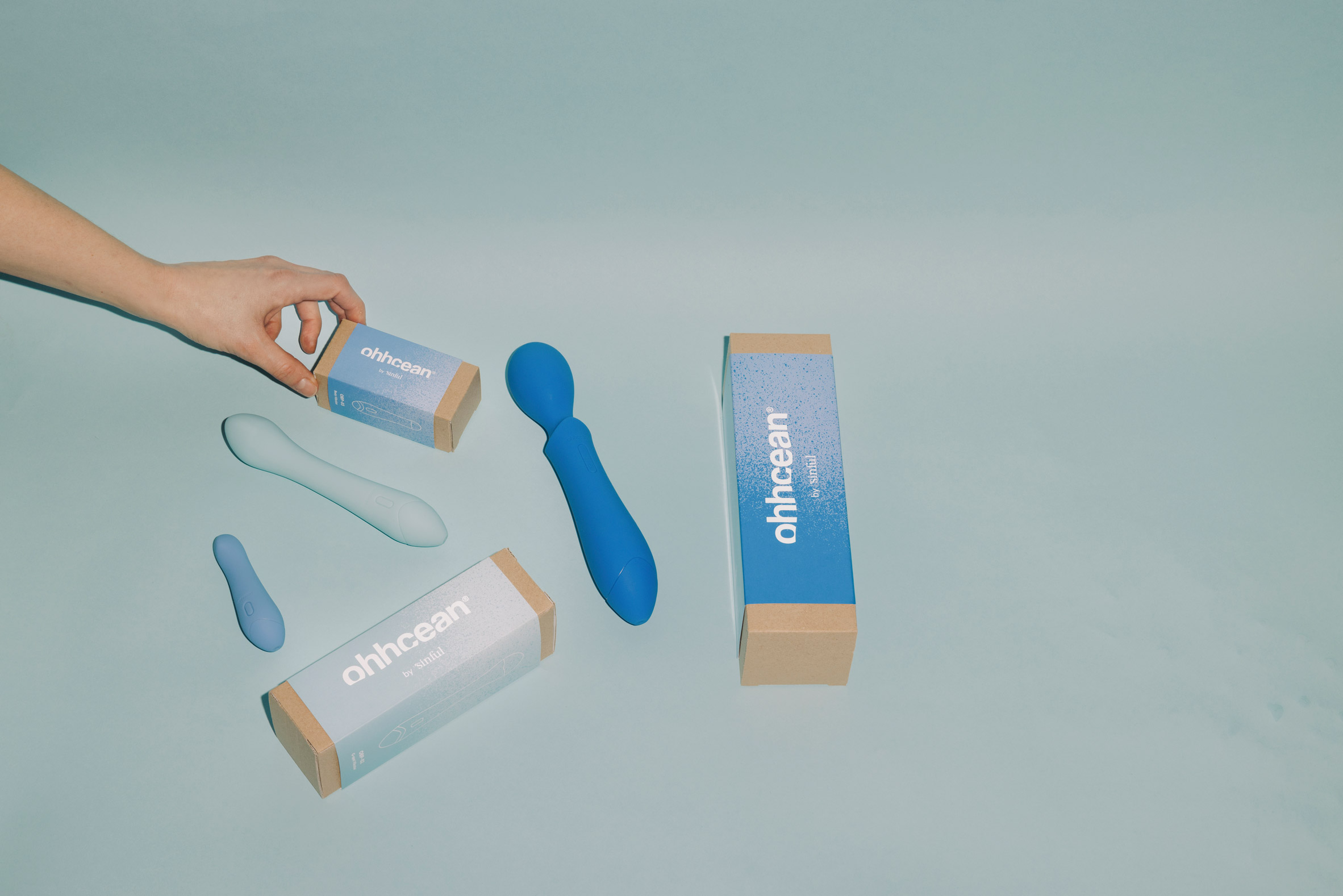 The plastic is collected from oceans in Southeast Asia
The plastic is collected from oceans in Southeast Asia
Eventually, Mackowski hopes that the same material will be used to expand the range, but she believes that it will take time for recycled plastics to be as easily accessible as those typically used for sex toys.
"Reducing the impact of my products on the planet became an obsession, but it also proved to be a long and complex journey met with many challenges, but consideration for the environment was first and foremost," she said.
"The products from Ohhcean by Sinful had to be nothing short of a luxurious sex toy but this is just the beginning," she added.
Plastic has long been used to produce sex toys, but the material's environmental impact has led some consumers to opt for less damaging options across products of all kinds.
In response, designers including Shahar Livne have turned to ocean plastic to create fossil-like jewellery for Balenciaga, and brands such as Adidas have used the recycled material for a range of apparel.
The post Ohhcean sex toys are made from recycled ocean plastic appeared first on Dezeen.
#all #design #products #productdesign #plastic #sextoydesign #oceanplastic #recycledplastic #recycling
Twelve Scandinavian furniture and lighting products on Dezeen Showroom
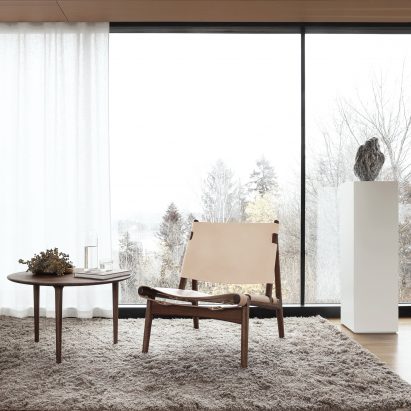
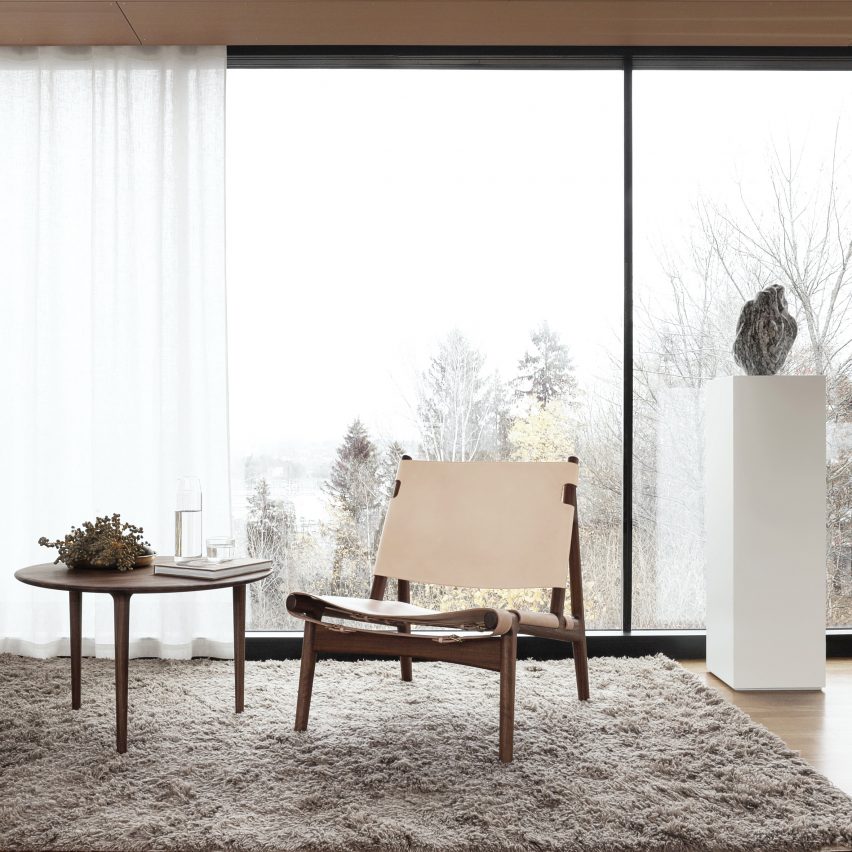
Dezeen Showroom: following Stockholm Design Week, which took place last week, here's our pick of 12 furniture and lighting designs by Scandinavian brands that have been featured on Dezeen Showroom.
The selection includes products by Swedish flooring company Bolon, Danish furniture and lighting brand &Tradition, and Finnish furniture brand Nikari.
The products range from contemporary lounge chairs and dining tables to geometric table lamps and durable outdoor furniture.
Also featured are re-releases of classic Scandinavian furniture, including Torbjørn Afdal's Hunter chair designed in 1960 and Verner Panton's Cloverleaf sofa, which was designed in 1969.
Stockholm Design Week took place from 7 to 13 February 2022 at various venues throughout the Swedish capital. The design festival will return in September to coincide with Stockholm Furniture & Light Fair, which was postponed due to the ongoing coronavirus pandemic.
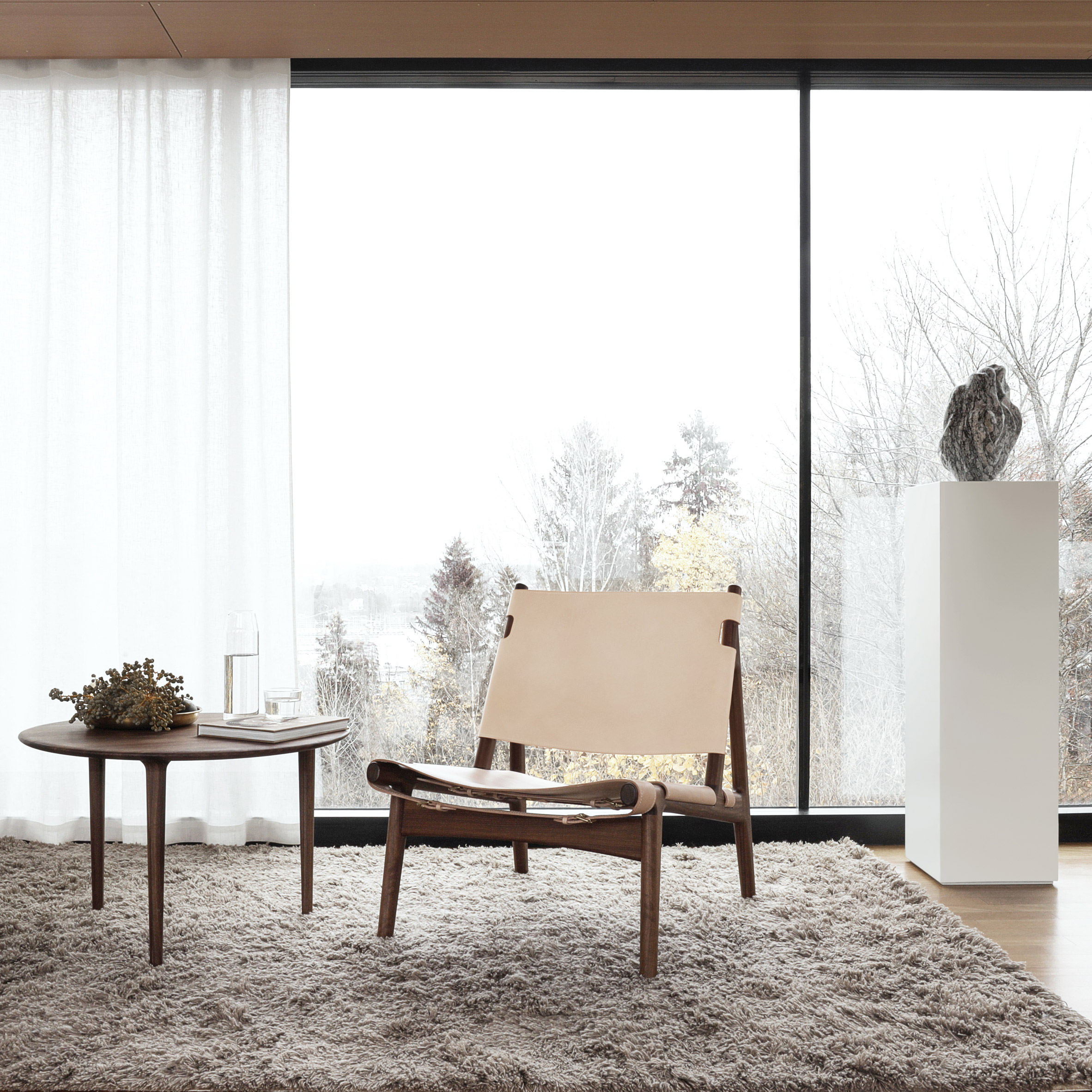
Hunter lounge chair by Torbjørn Afdal for Eikund
Furniture company Eikund has released an updated version of Hunter, a lounge chair with a solid wood frame and saddle leather seat pulled taut by buckles.
Originally designed in 1960 by Norwegian designer Torbjørn Afdal, the new model uses the latest innovations in materials and processes while staying true to the chair's original design.
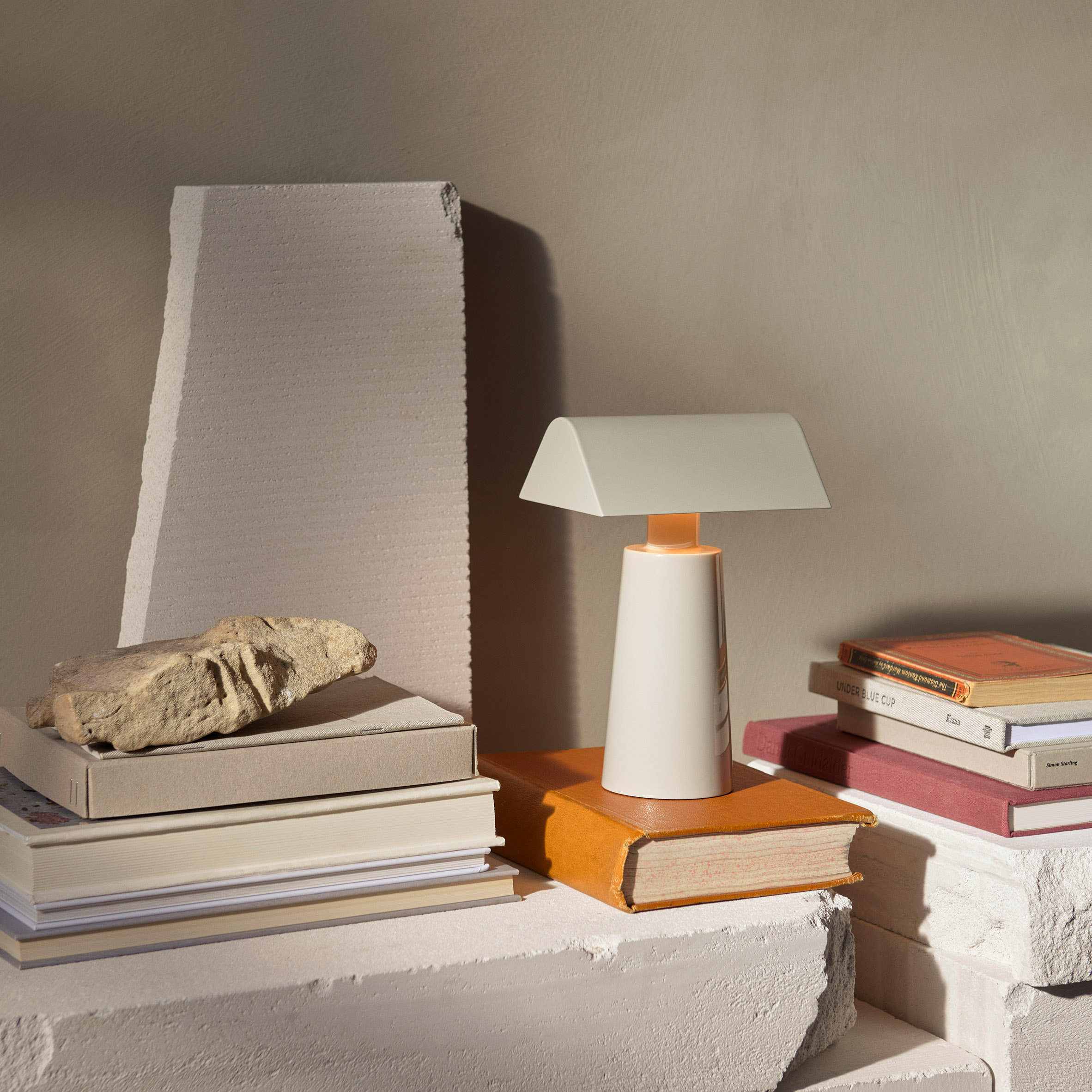
Caret table lamp by Matteo Fogale for &Tradition
Designed by Matteo Fogale for Danish brand &Tradition, the Caret table lamp is a contemporary interpretation of "bankers lamps" traditionally found in libraries.
The table lamp is made from lacquered steel and was designed by Fogale to suit both work and home environments.
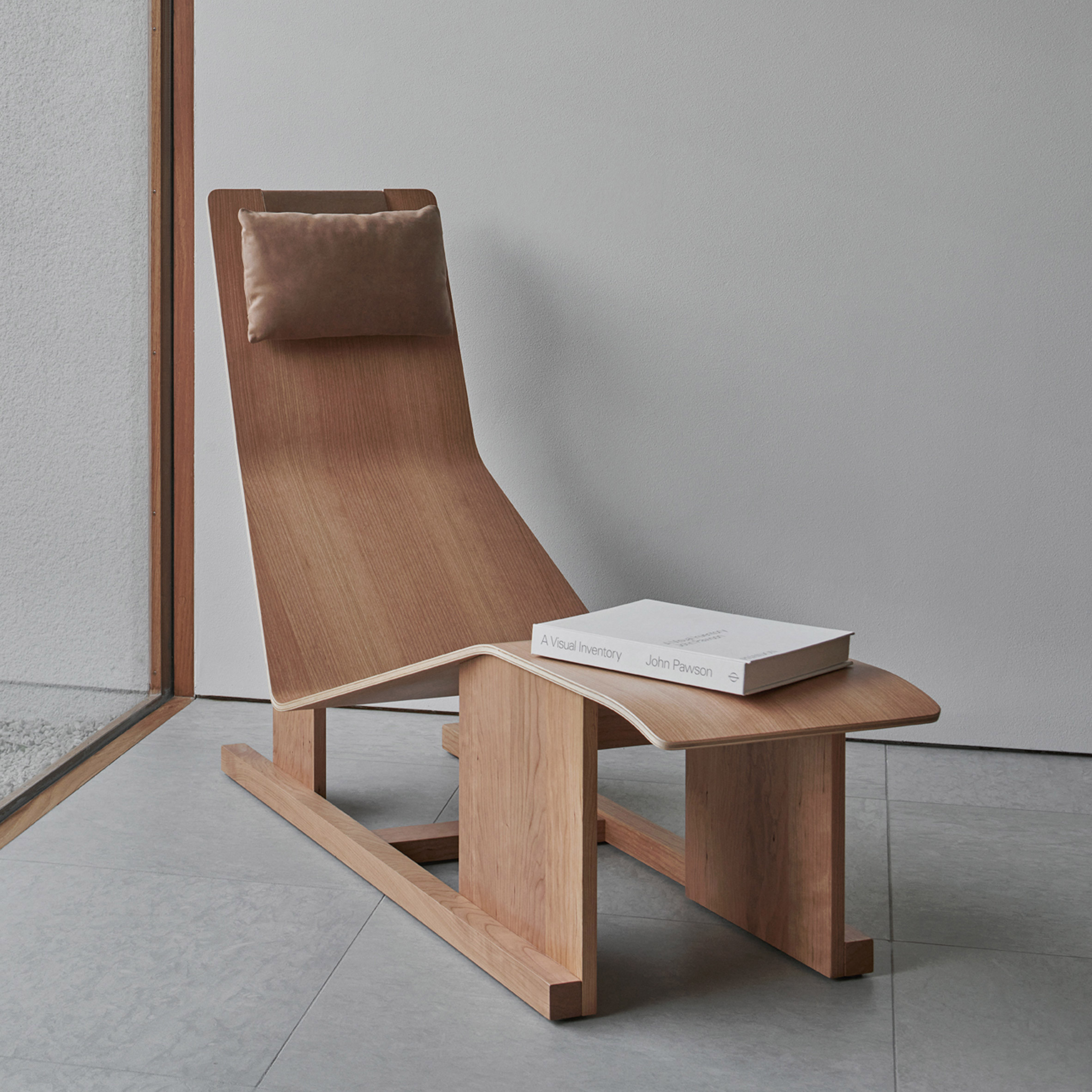
4PM chaise longue by Massproductions
4PM is a chaise longue created by Swedish brand Massproductions to provide comfort without the need for upholstery.
The chaise longue is available in two types of laminated wood, including a warm-toned Douglas fir and a slightly darker cherry wood.
Massproductions also created a self-build version, which includes instructions and drawings on how to build the design from scratch using materials that can be found at any hardware store.
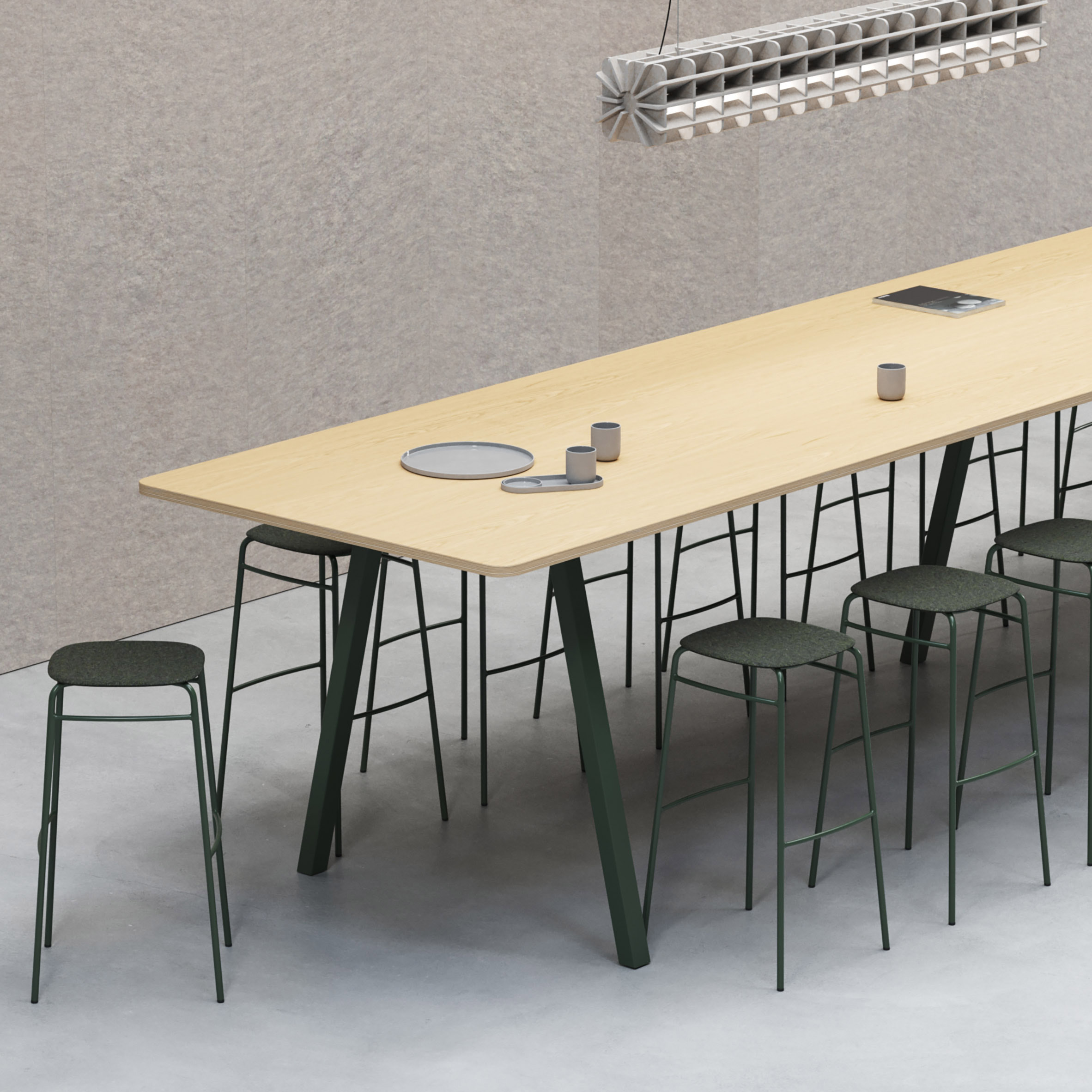
Big modular table system by De Vorm
Designed by Dutch brand De Vorm, the Big modular table system allows users to create custom tables up to ten metres long and two metres wide.
The table contains up to 75 per cent recycled materials and is suitable for dining, working or meetings.
Find out more about Big modular table system ›
![]()
Swedish brand Kasthall has released its Häggå Icon rug collection in a new colour range, with shades informed by nature and the shifting of seasons.
The collection of woven rugs is available in three classic Häggå patterns, including Stripe, Dot and Post, a lattice-like motif.
The rugs are designed to be timeless and well suited to any interior style, while the new colour palette is intended to emphasise the patterns.
Find out more about Häggå Icon rugs ›
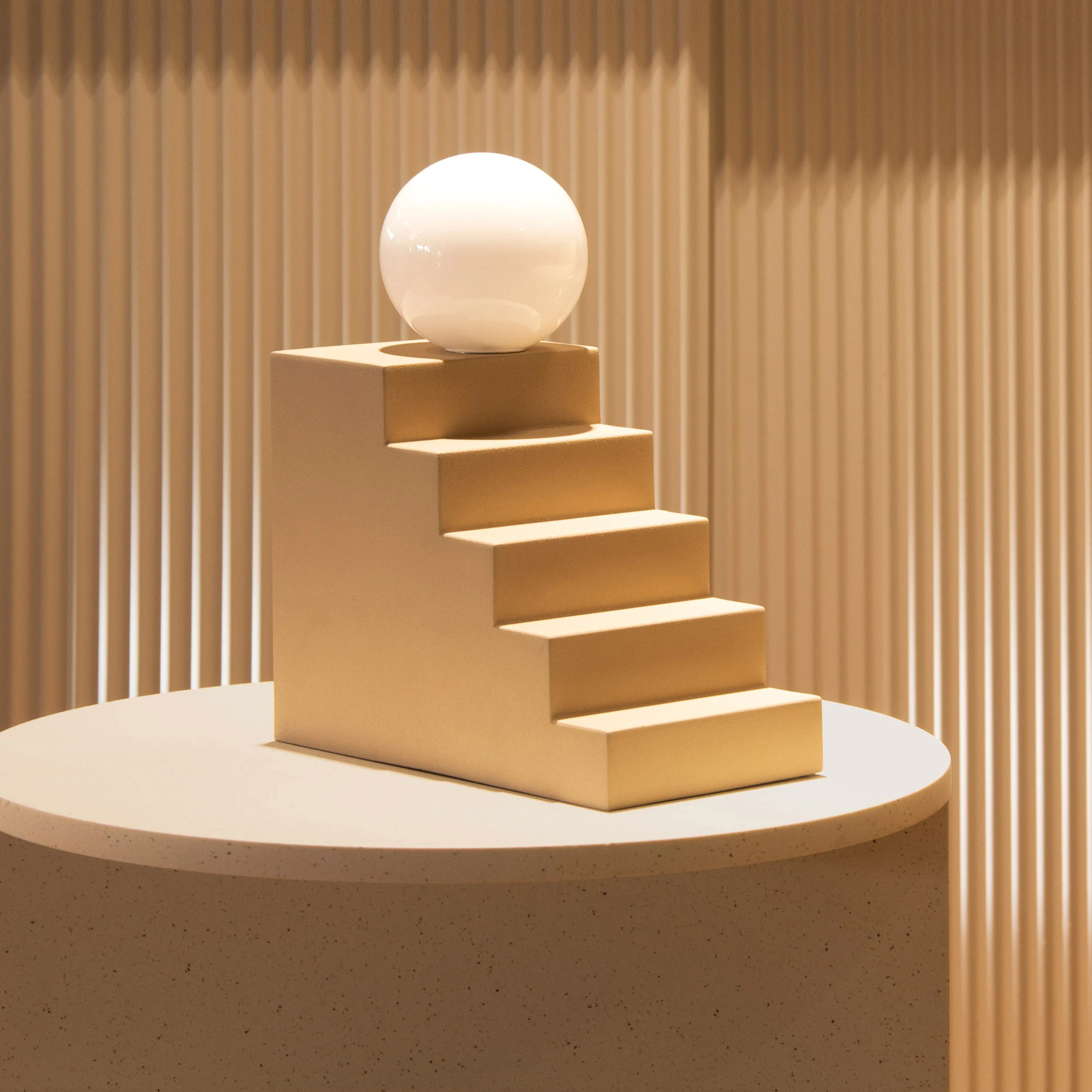
Stair table lamp by Notchi Architects for Oblure
The Stair table lamp consists of a stepped steel base with a spherical light that appears to be balancing on the edge of the top step, designed by Swedish studio Notchi Architects for lighting brand Oblure.
The lamp, which also doubles as a bookend, is a playful take on geometry and gravity and is designed to suit home and work settings.
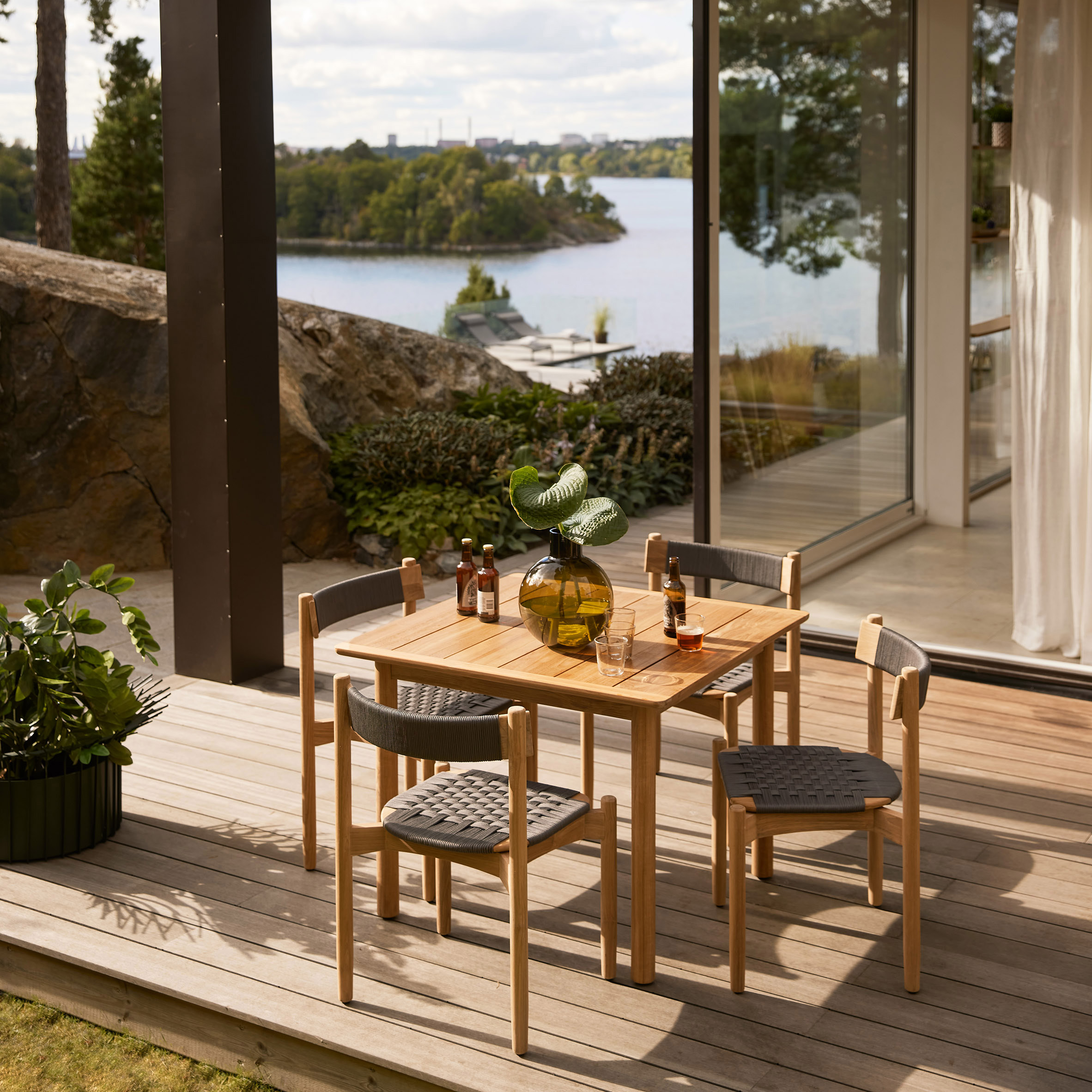
Koster outdoor furniture by Studio Norrlandet for Skargaarden
Created by Studio Norrlandet, Koster is an outdoor furniture collection designed to withstand extreme weather conditions.
Available from Swedish furniture brand Skargaarden, the collection includes a chair, bar stool and three sizes of tables, made from teak wood and UV-resistant rope.
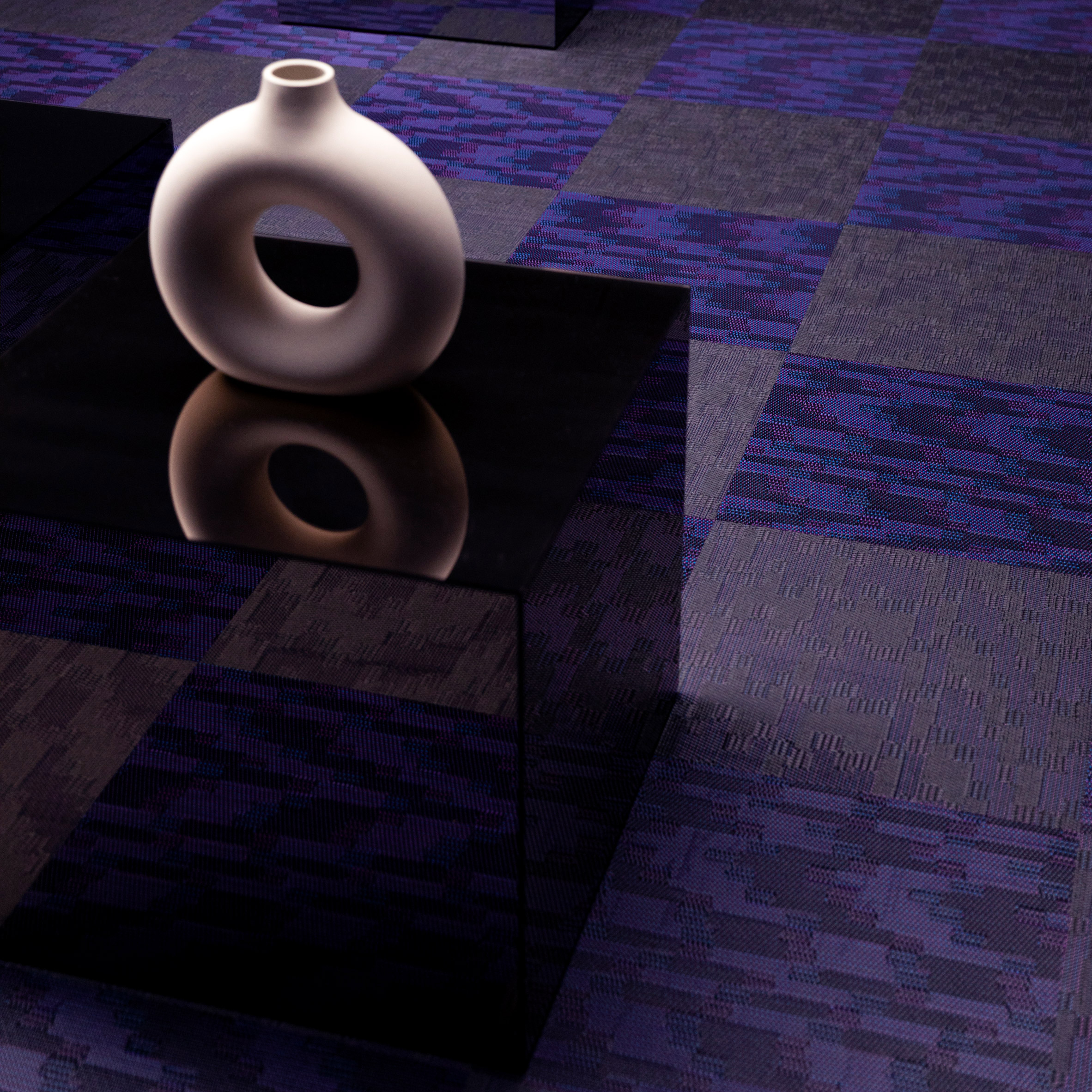
Truly flooring collection by Bolon
Truly is a woven flooring collection that features colourful patterns, designed by Swedish flooring company Bolon.
The collection includes a zigzagging pattern called 100%, and a matrix-like grid pattern in shades of green called Anything Everything.
According to Bolon, Truly flooring is made in Sweden with renewable energy and contains recycled materials.
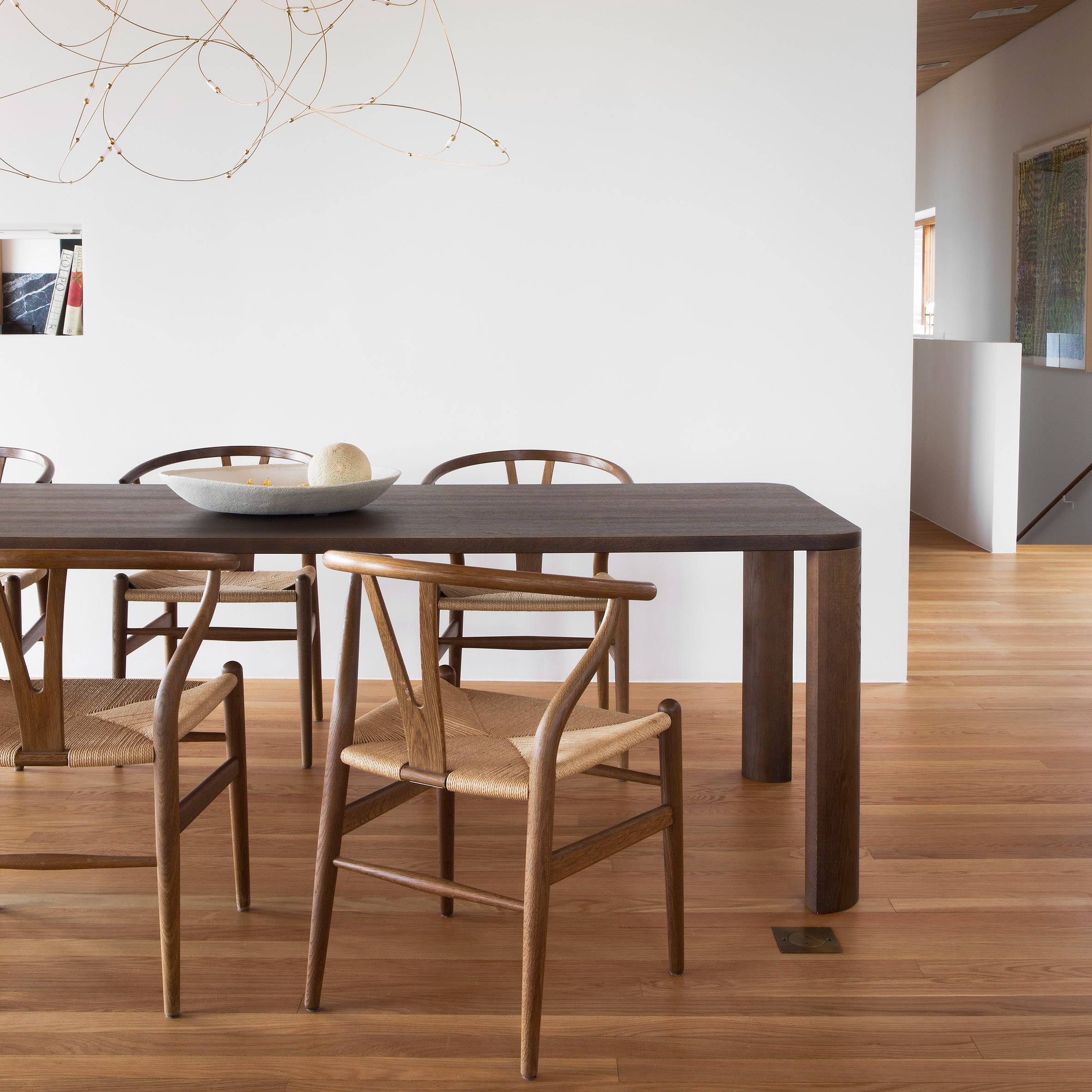
Moci dining table by Moa Sjöberg for Asplund
Moci is a minimalist dining table with rounded corners and table legs, designed by Moa Sjöberg for Swedish brand Asplund.
The table has an oak veneer top on solid oak legs and was awarded furniture of the year in RUM Magazine's Swedish Design Awards 2022.
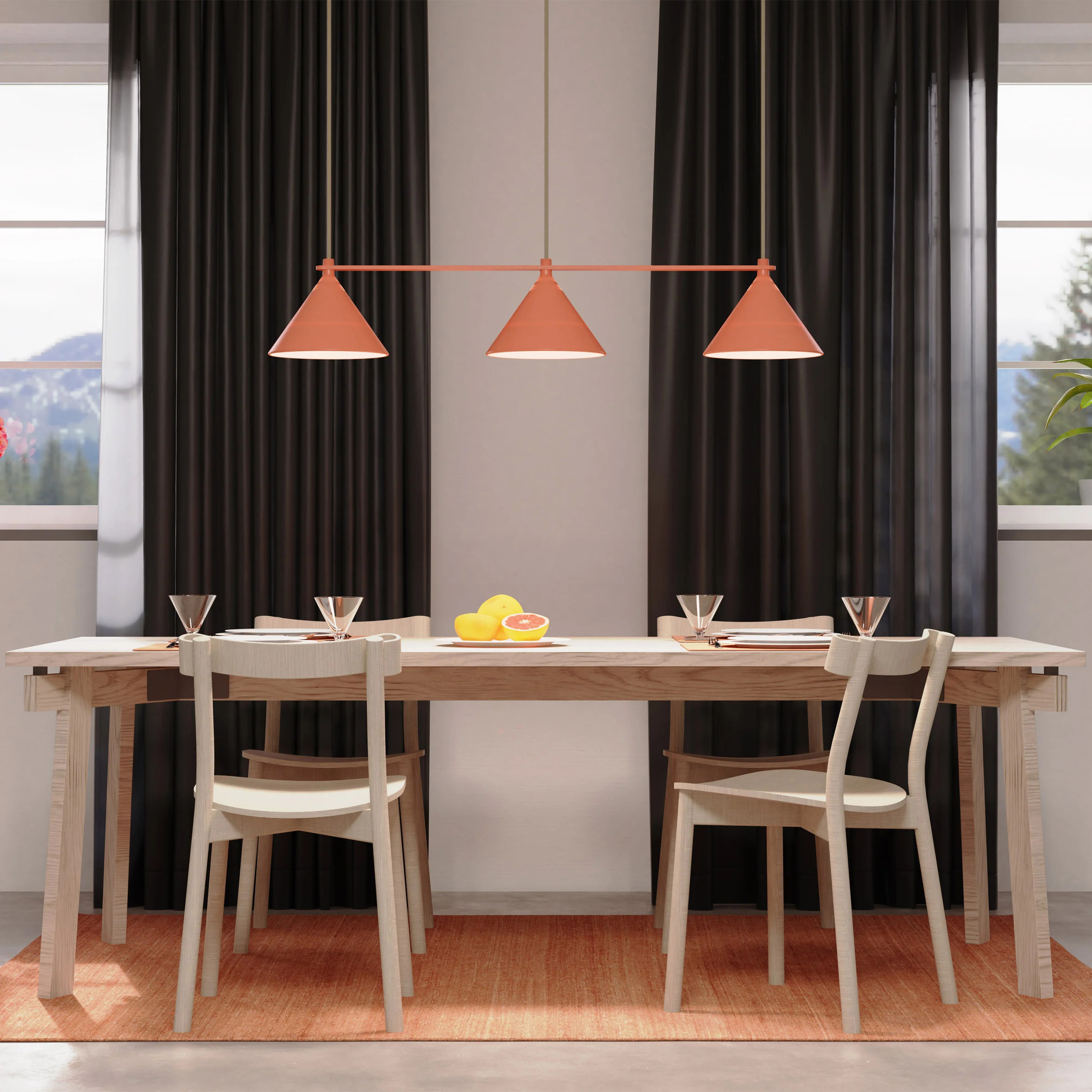
Lumo pendant by Thomas Bernstrand for Zero Lighting
Lumo is a conical pendant lamp that can be customised into different arrangements, created by Swedish designer Thomas Bernstrand for Zero Lighting.
The lamp can be hung on its own or clustered with other lamps in a variety of shapes, including a straight line, circle, rectangle, triangle or square.
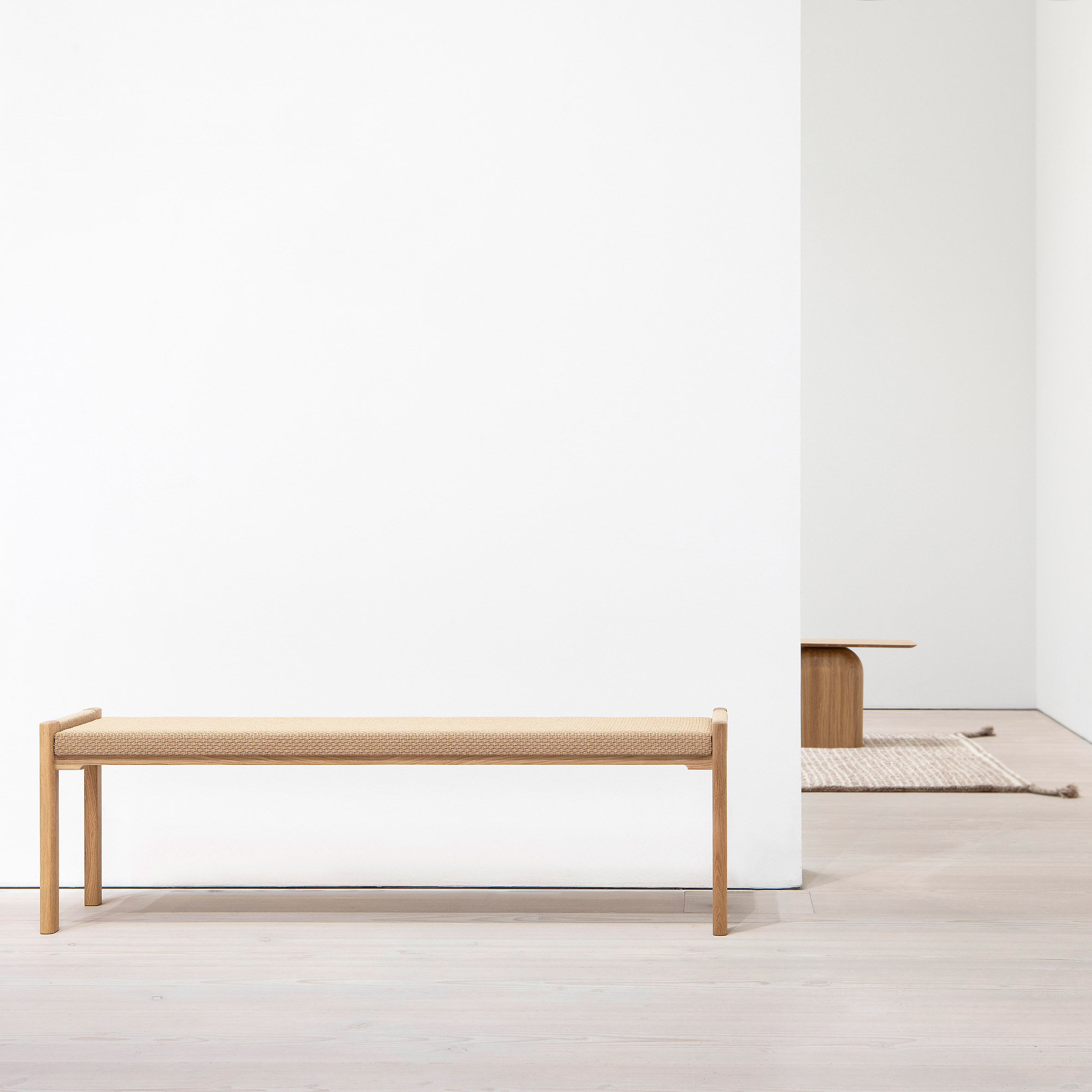
Detalji bench by Jenni Roininen for Nikari
Made from sustainably grown oak and woven paper, the Detalji bench was designed by Jenni Roininen for Finnish brand Nikari and in collaboration with paper yarn specialists Woodnotes.
The bench's seat is covered in Woodnotes's Woodpecker fabric, which is spun and woven from undyed paper.
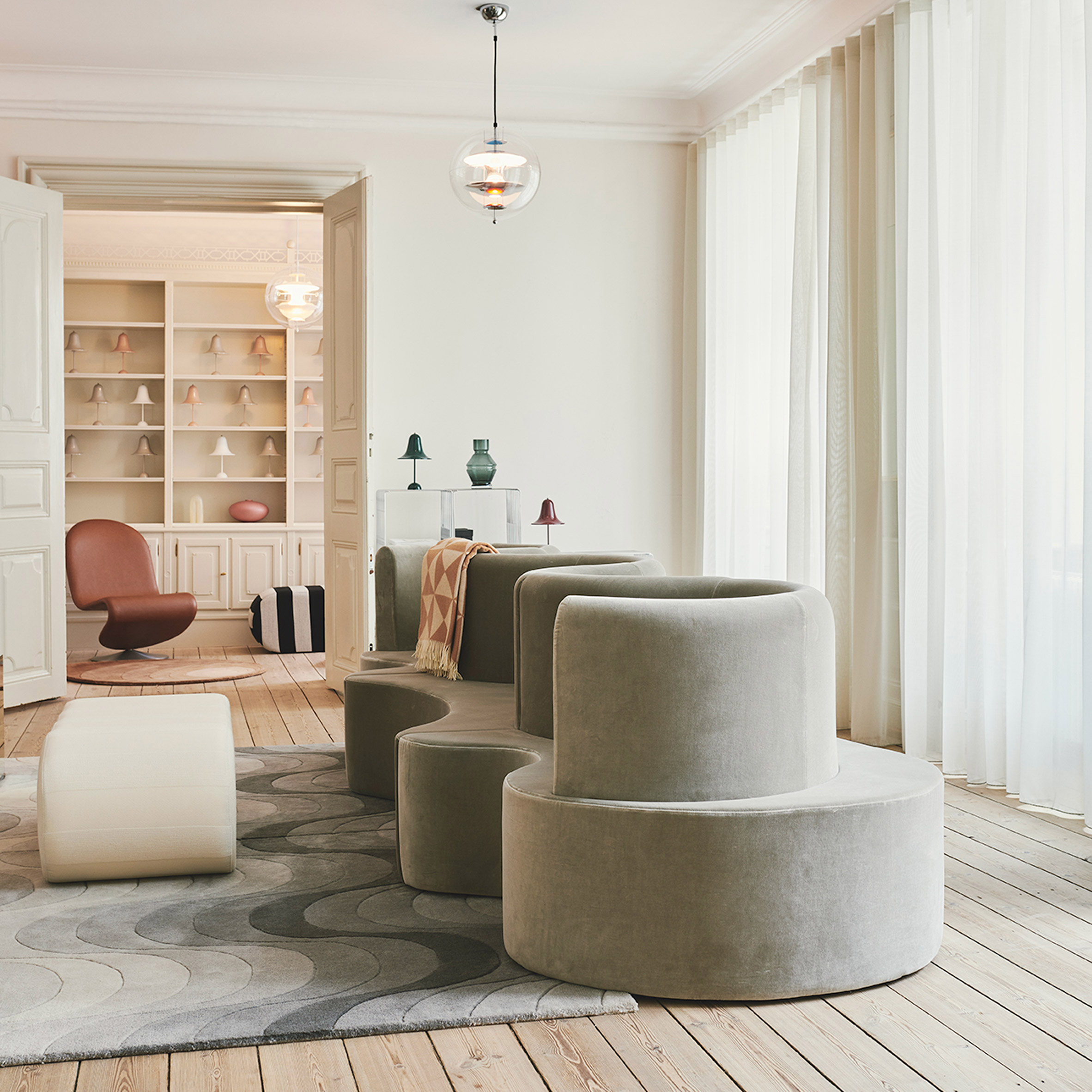
Cloverleaf sofa by Verner Panton for Verpan
Cloverleaf is a sculptural sofa that was originally designed in 1969 by Danish designer Verner Panton, now available in versions for indoor and outdoor settings from Verpan.
The design references the curvaceous shape of a cloverleaf and comes in modules, which users can add to or remove depending on the desired outcome.
Find out more about Cloverleaf ›
Dezeen Showroom
Dezeen Showroom offers an affordable space for brands to launch new products and showcase their designers and projects to Dezeen's huge global audience. For more details emailshowroom@dezeen.com.
Dezeen Showroom is an example of partnership content on Dezeen. Find out more about partnership contenthere.
The post Twelve Scandinavian furniture and lighting products on Dezeen Showroom appeared first on Dezeen.
#furniture #all #lighting #design #productdesign #stockholmdesignweek #dezeenshowroom #dezeenshowroomspecialfeatures
One person like that
1 Shares
Carbon-capturing Celour paint allows anyone to "participate in CO2 removal in their daily lives"
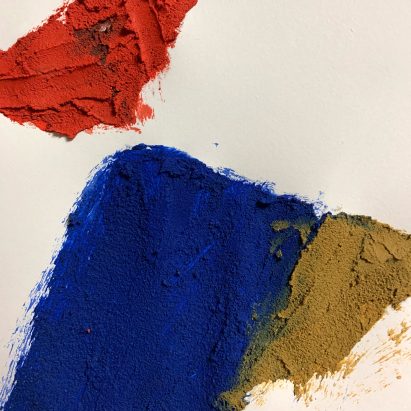
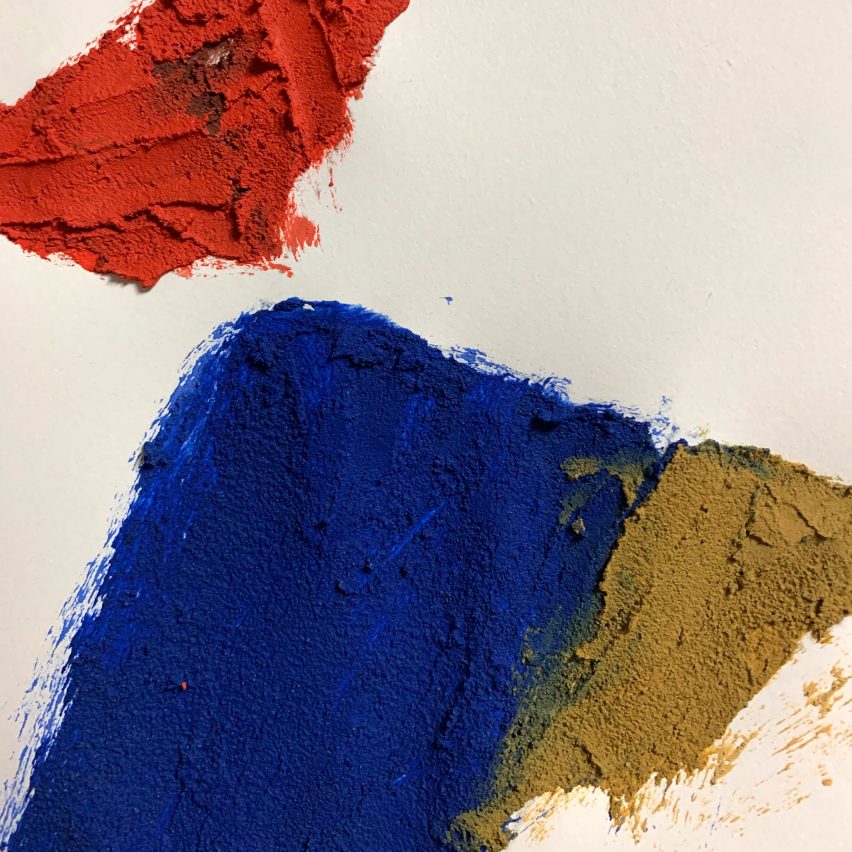
Design graduate Kukbong Kim has developed a paint made from demolished concrete that is capable of absorbing 20 per cent of its weight in carbon.
Called Celour, the paint can sequester 27 grams of CO2 for every 135 grams of paint used.
"That is the same amount of carbon dioxide that a normal tree absorbs per day," Kim said.
The indoor-outdoor paint is made of waste concrete powder, a cement-based residue from concrete recycling that is normally buried in landfills, where it can alkalise the soil and have a detrimental effect on local ecosystems.
 Celour is a carbon-capturing paint that comes in three colours
Celour is a carbon-capturing paint that comes in three colours
Through a chemical process called mineral carbonation, which takes place when the paint reacts with the CO2 in the surrounding air, Kim says Celour can reabsorb a significant part of the emissions that were generated by producing the cement in the first place.
Eventually, she hopes to optimise the capturing capacity of the paint so that it completely negates the carbon footprint of the cement it is made from.
"I think it is too early to describe Celour as carbon neutral," Kim said. "It needs further study but I want to make it a carbon-negative product. That is my goal."
"It's not enough if we just stop emissions, as we already have high levels of CO2 in the air," she added. "We need to participate in CO2 removal in our daily lives."
Concrete naturally reabsorbs some of the carbon it emits
Cement is the most carbon-intensive ingredient in concrete and is responsible for eight per cent of global emissions.
But when concrete is recycled, only the aggregate is reused while the cement binder is pulverised to create waste concrete powder and sent to landfill, where it can disturb the pH balance of the surrounding soil.
"Waste concrete powder is high in calcium oxide," Kim explained. "And when it is buried and comes into contact with groundwater or water in the soil, it turns into calcium hydroxide, which is strongly alkaline."
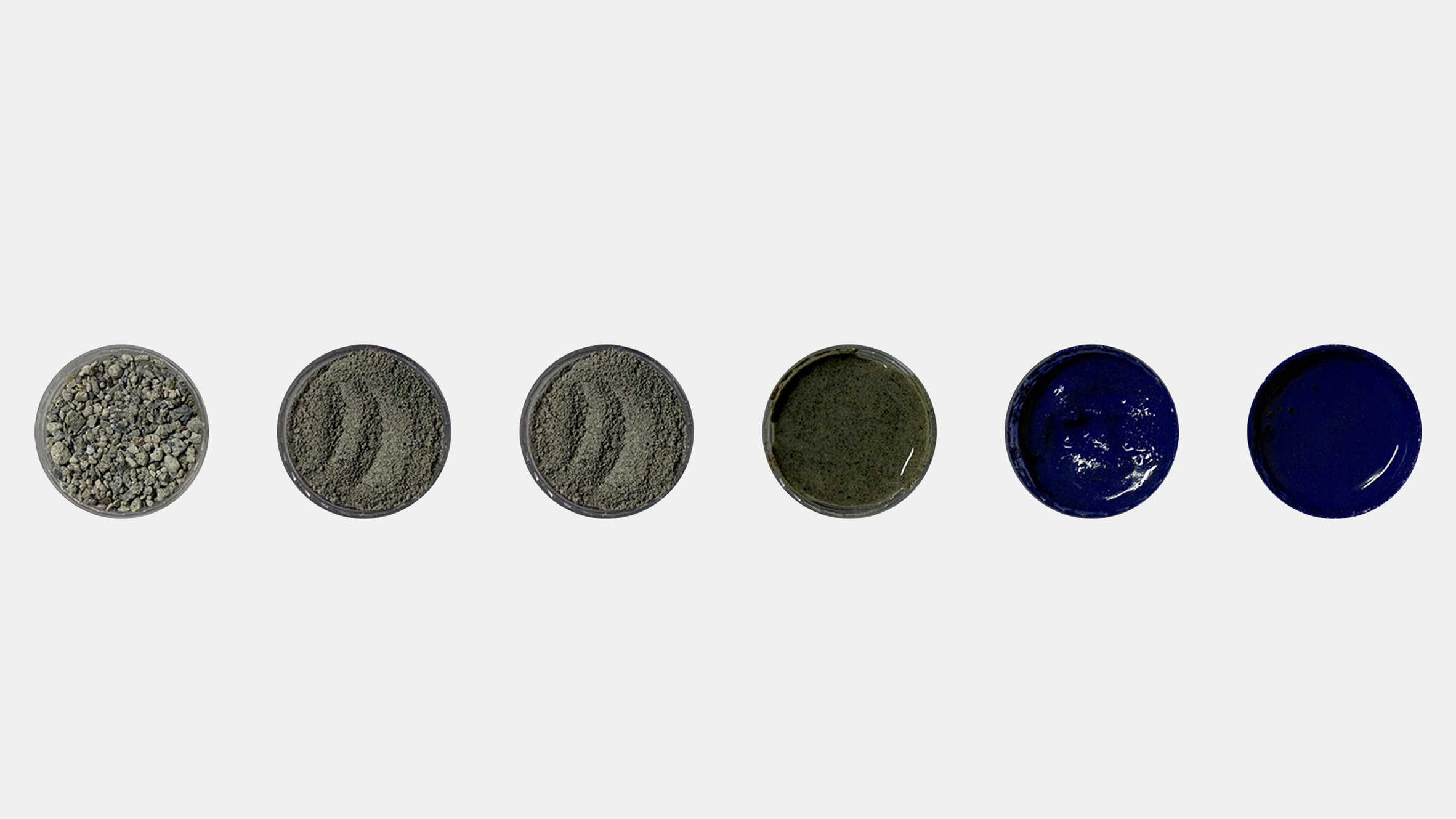 The waste concrete powder is filtered, pulverised and mixed with a binder, water and pigments
The waste concrete powder is filtered, pulverised and mixed with a binder, water and pigments
With her graduate project from the Royal College of Art and Imperial College London, the designer hopes to show the usefulness of this industrial waste material by maximising its natural ability to capture carbon.
Studies have shown that cement already reabsorbs around 43 per cent of the CO2 that is generated in its production through the mineral carbonation process.
This is set off when concrete is cured by adding water, which reacts with the calcium oxide in the cement and the CO2 in the air to form a stable mineral called calcium carbonate or limestone.
A traditional concrete block continues to cure throughout its life but because this process is reliant on exposure to air, only its outer layers will react with the CO2 while its core will remain uncarbonated.
Celour could store carbon for thousands of years
But Kim was able to improve the material's carbon-capturing capabilities by turning the waste concrete pounder into a paint, mixed with a binder, water and pigments.
This is spread thinly on a surface so that more of the material is exposed to the air and can carbonate.
In addition, the coarse powder was further filtered and pulverised to increase the relative surface area of the particles while a polyvinyl alcohol (PVA) binder creates small gaps for air to enter.
"I have done a lot of experiments with different ingredients to maximise carbon absorption by increasing the surface area that comes into contact with carbon dioxide in the air," she explained.
"Graphene, which can capture lots of carbon thanks to its structure, was also considered as a binder but excluded because it is currently priced high and cannot be mass-produced."
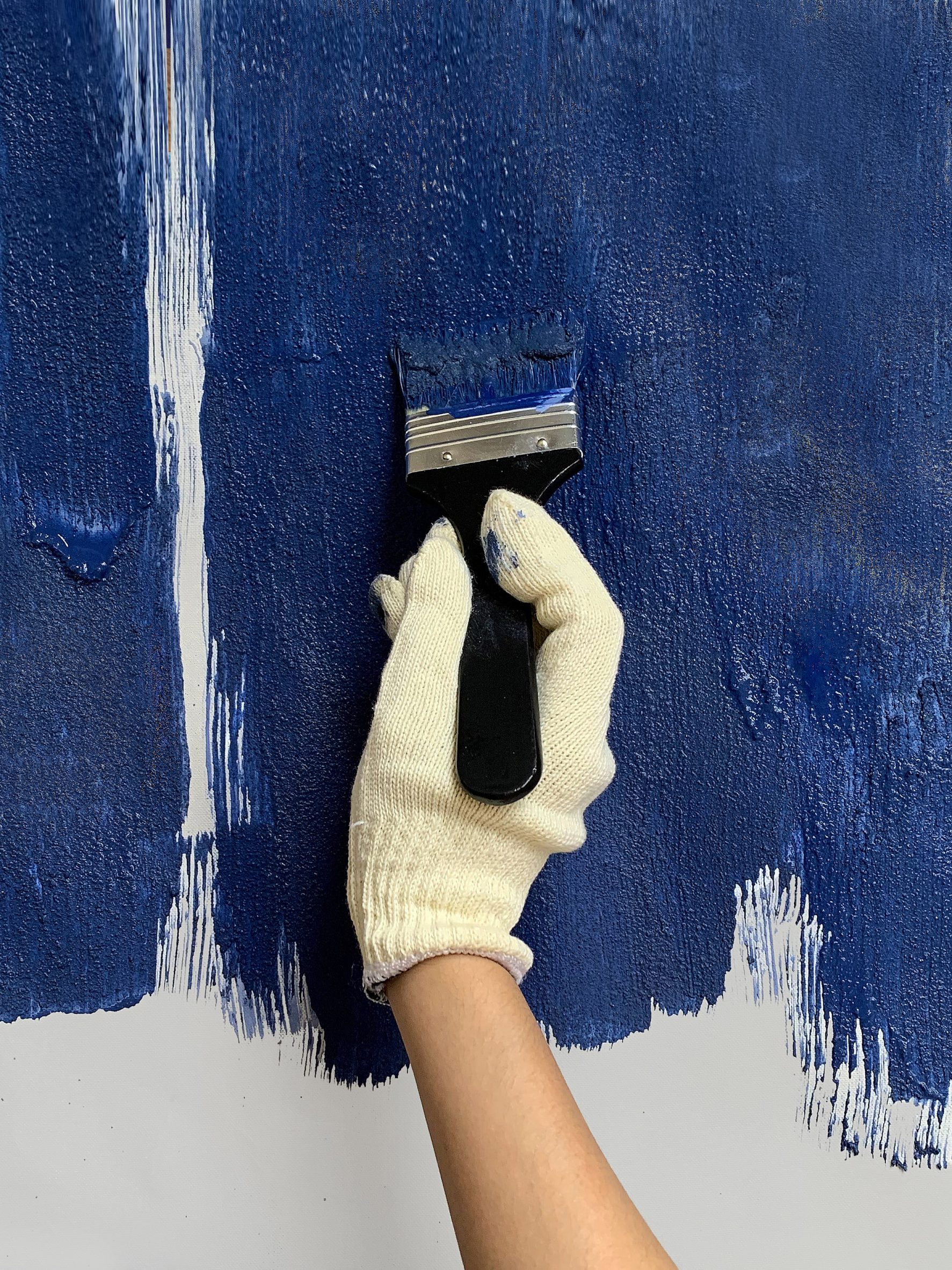 The paint can be used both indoors and outdoors
The paint can be used both indoors and outdoors
Cement has long been used to create traditional paint, which is also capable of sequestering CO2. But Kim hopes to harness these carbon-capturing benefits while keeping a polluting waste material out of landfills and avoiding the emissions associated with making new cement.
How long the paint is capable of storing carbon is dependent on what happens to it after it is no longer needed. But Kim says it could be locked away for thousands of years unless exposed to extreme heat, which would alter the chemical structure of the carbonate.
As part of our carbon revolution series, Dezeen has profiled a number of carbon capture and utilisation companies that are working on turning captured CO2 into useful products from bioplastic cladding to protein powder and concrete masonry units.
The post Carbon-capturing Celour paint allows anyone to "participate in CO2 removal in their daily lives" appeared first on Dezeen.
#all #products #design #royalcollegeofart #productdesign #concrete #studentprojects #materials #graduates #paint #cement #carboncapture #carboncaptureandutilisation #mineralcarbonation
1 Shares
Ohmie is a 3D-printed lamp made from orange peels
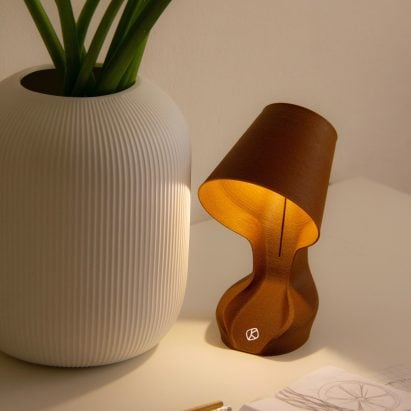
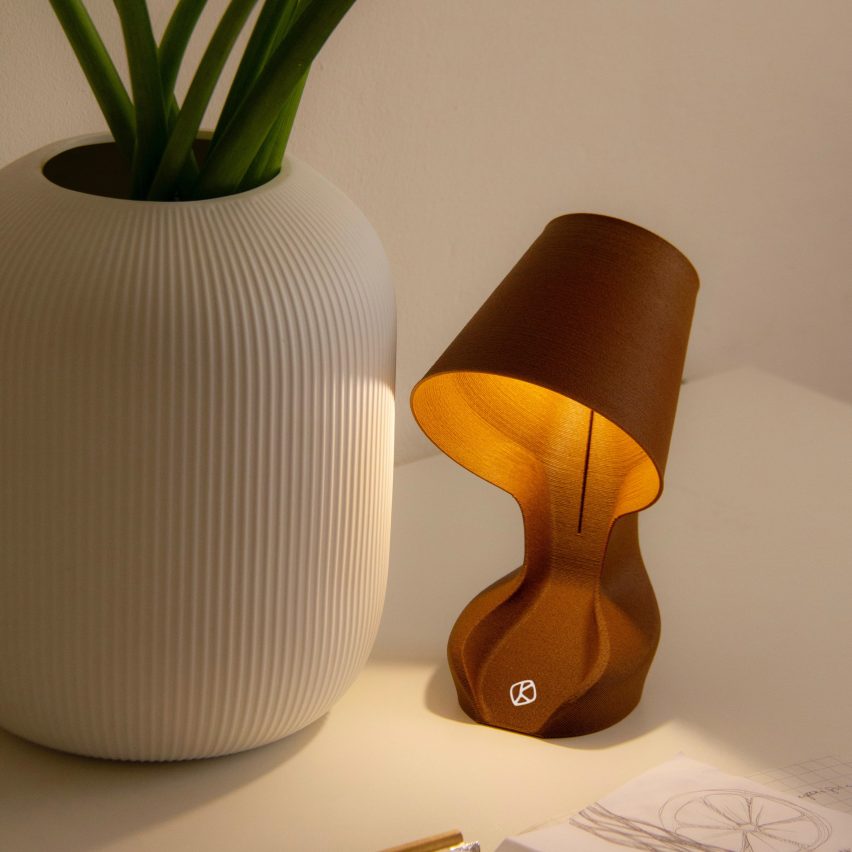
Milan-based start-up Krill Design has 3D printed Sicilian orange peels into a tactile lamp that can be composted along with organic household waste.
The designers at Krill Design turned to orange peel to create the lightweight lamp because of the citrus fruit's ubiquity in Sicily, Italy.
Each lamp is made from the discarded peels of two or three oranges sourced from a family-owned food producer in the Messina province of Sicily.
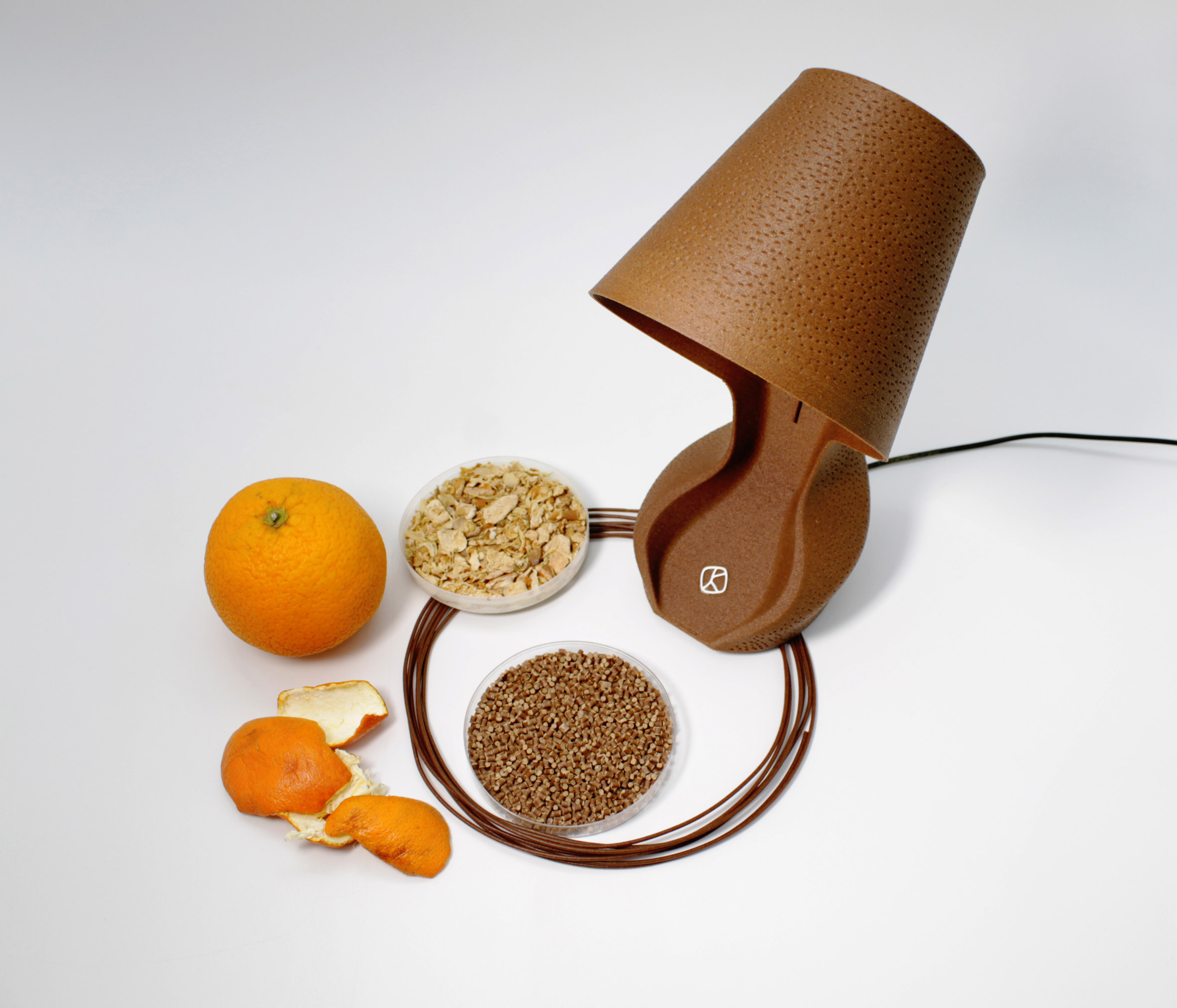 Top: each lamp is made from two or three oranges. Above: Ohmie retains the natural bumpy feel and smell of oranges
Top: each lamp is made from two or three oranges. Above: Ohmie retains the natural bumpy feel and smell of oranges
"We needed a material that would not run out and given that Sicily alone produces about 3 per cent of global oranges, that allows us to stock up on the peels and be able to always produce Ohmie," Krill Design told Dezeen.
"We are keen on promoting a local and fully Italian supply and production chain. Oranges are one of the many Italian produces renowned worldwide and we believe it is a nice symbol."
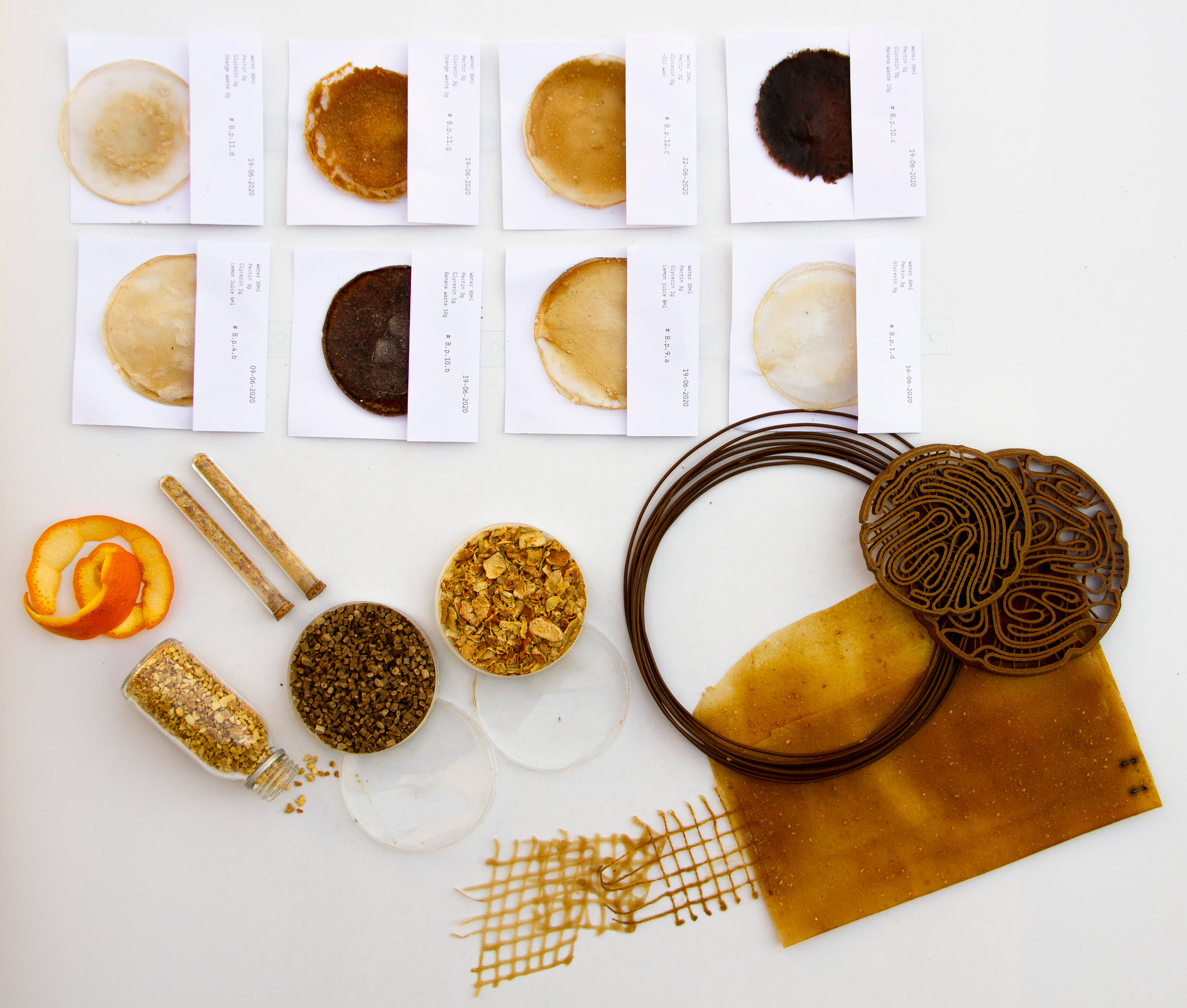 Ohmie is made from locally sourced Sicilian oranges
Ohmie is made from locally sourced Sicilian oranges
From its patterned surface to its orangey smell and vibrant colour, the 23-centimetre-tall lamp was designed to reflect its origins.
The designers hope the lamp demonstrates how food waste can be successfully repurposed into an "eco-design product that is both "beautiful and functional".
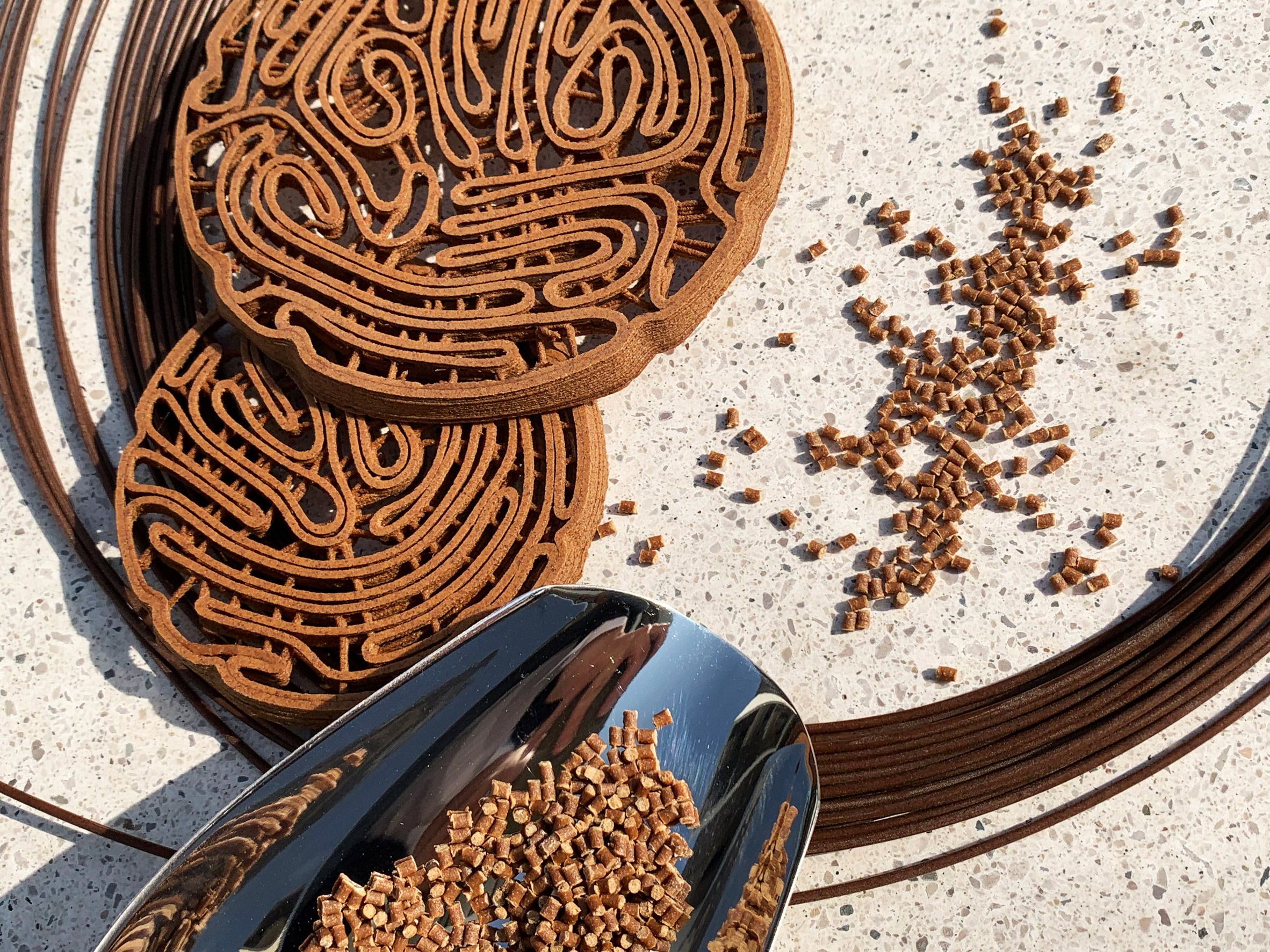 The peels are ground down and combined with starch before being 3D printed
The peels are ground down and combined with starch before being 3D printed
After use, the Ohmie lamp can be broken down by hand into smaller pieces before being thrown away with the household's organic waste, the studio explained.
"The orange lamp, at the end of its life, can simply be broken into fragments and tossed with the household's organic waste to be disposed of in composting facilities and be turned either into compost or biofuel depending on local dispositions," said Krill Design.
Currently, the remains have to be sent to a composting facility instead of decomposing straight into nature.
"We decided to develop a material that, for now, would only decompose in industrial facilities for performance and durability reasons, but we would like to research more and achieve a biopolymer that can be durable and sturdy as well as easy composted in nature or in an at-home compost," it added.
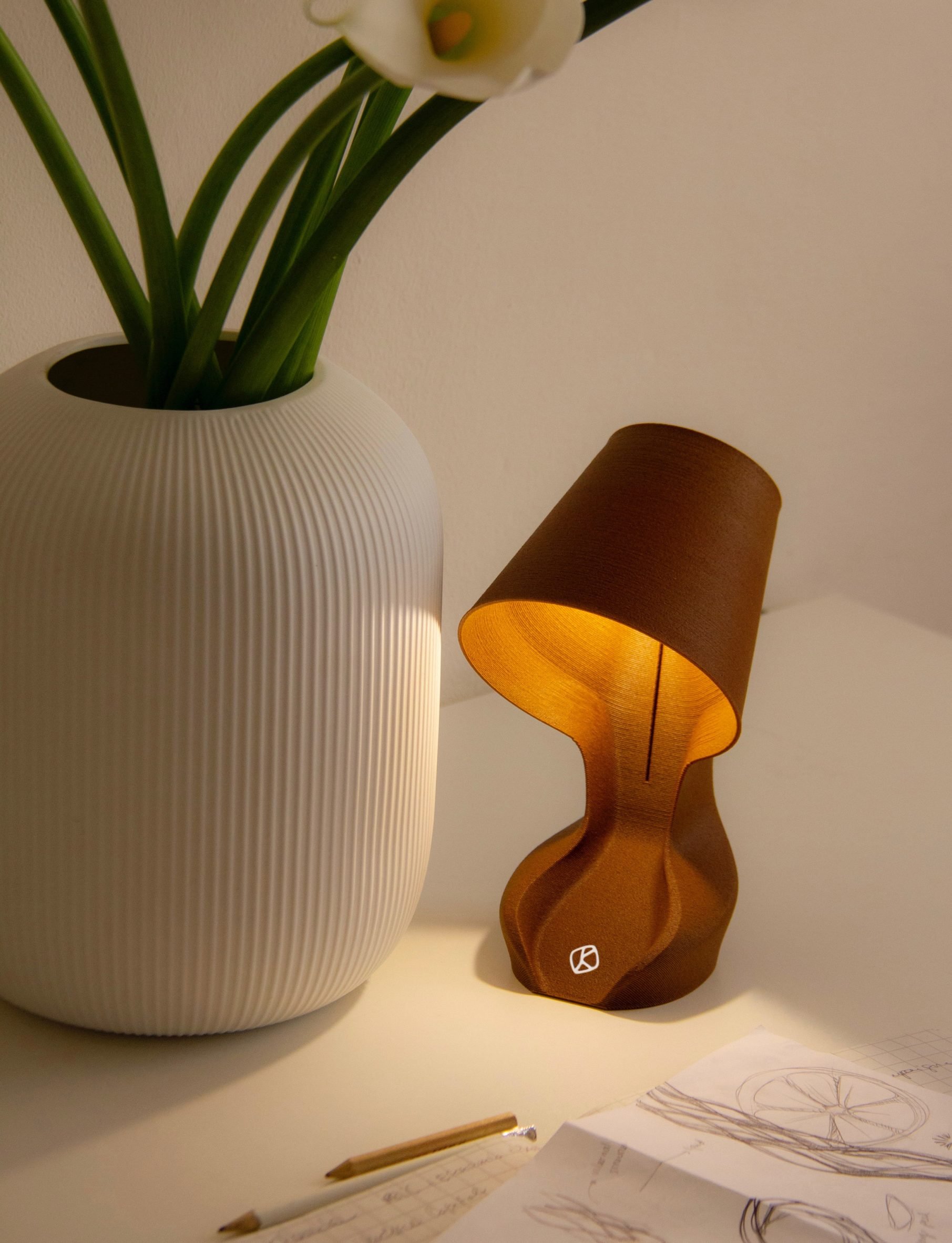 The light can be broken down and composted in a composting factory
The light can be broken down and composted in a composting factory
Krill Design used 3D-printing techniques to "avoid any form of waste during production". The orange peels are ground down and combined with vegetable starch before being 3D printed.
"Once the peels have arrived in our office in Milan they are dried – the organic scraps need to have moisture level below 4 per cent – ground to a fine powder and sifted to make sure all grains are fine enough," the studio said.
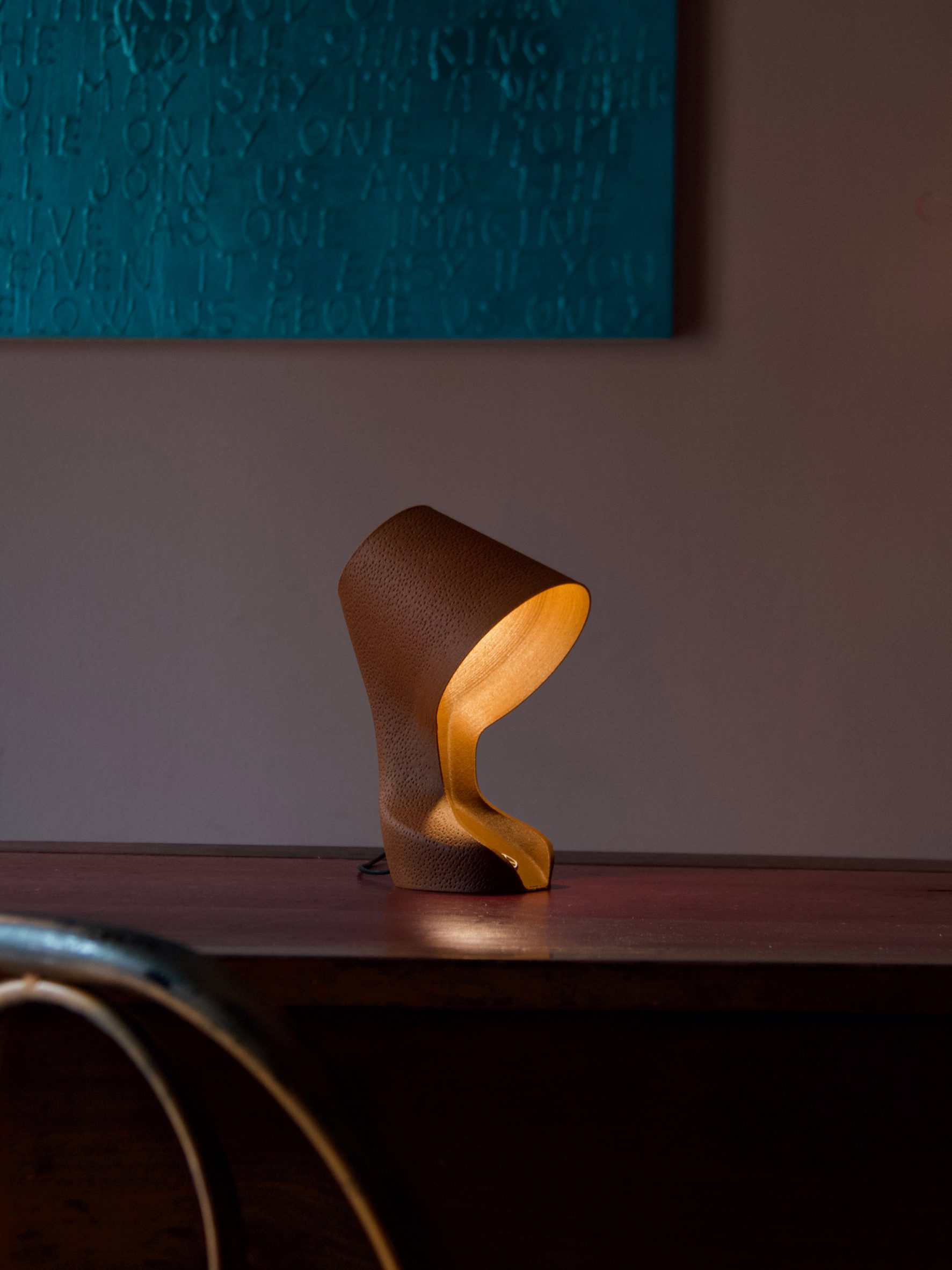 The designers hope to show how food waste can be effectively repurposed
The designers hope to show how food waste can be effectively repurposed
The peel powder is then sent to a compounding facility where it is added to a biopolymeric vegetable starch base. Afterwards, the orange biopolymer is produced in the form of pellets.
This is the only part of the production phase that is outsourced, the brand said.
"Only this phase of the process is outsourced as the machinery needed is extremely bulky and expensive," Krill Design explained.
"After this, we extrude the orange filament from the pellet and use it within a 3D printer to bring Ohmie to life."
Fruits have been used in a number of designs. Copenhagen-based brand Beyond Leather combined apple juice leftovers with natural rubber to create Leap, a plant-based alternative to leather, while Júlia Roca Vera has created a cosmetics line made from discarded fruits.
Photography is byKrill Design.
The post Ohmie is a 3D-printed lamp made from orange peels appeared first on Dezeen.
#all #lighting #design #products #lamps #productdesign #homewaredesign #3dprinting #homeware #compostablematerials
1 Shares
Middlesex University unveils 15 projects from product design and engineering students
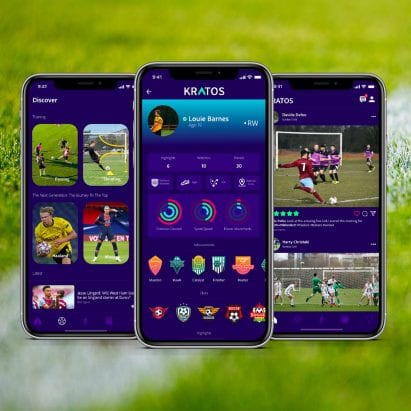
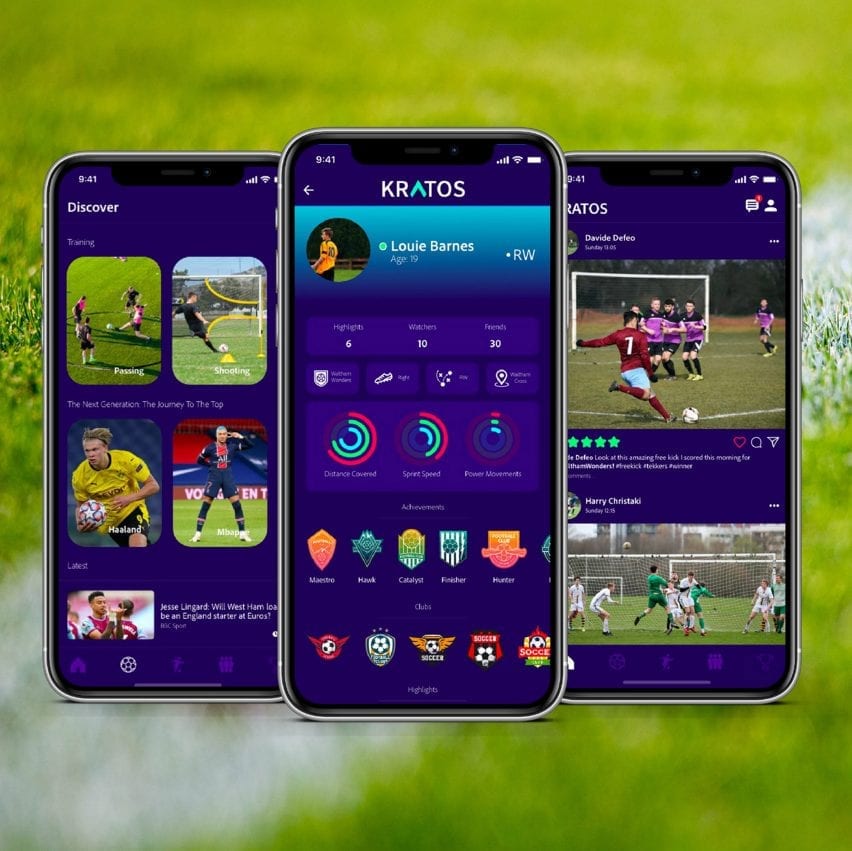
A car-based AI that gives users personalised travel updates and an affordable device that analyses football player's performances are included in Dezeen's latest school show from students at Middlesex University.
Also featured is a subtle distraction game aiming to help people with chronic pain reduce their discomfort and a project that tackles the issue of 'fast furniture' by equipping people with the tools to make their own.
School: Middlesex University, Faculty of Science and Technology
Courses: BA Product Design and BEng Product Design Engineering
Tutors: Kate Herd, Andy Bardill, Wyn Griffiths, Ahmed Patel, Neil Melton, Dean Brown, Patrick Jordan, Brendan Walker, Peter Wong and Tom Stables
"Product Design and Product Design Engineering at Middlesex University are practice-based programmes, focused on employability. Both the BA and BEng programme are driven by our passion for understanding people and technology, exploring innovative solutions driven by real opportunities and addressing challenges faced by both industry and society."
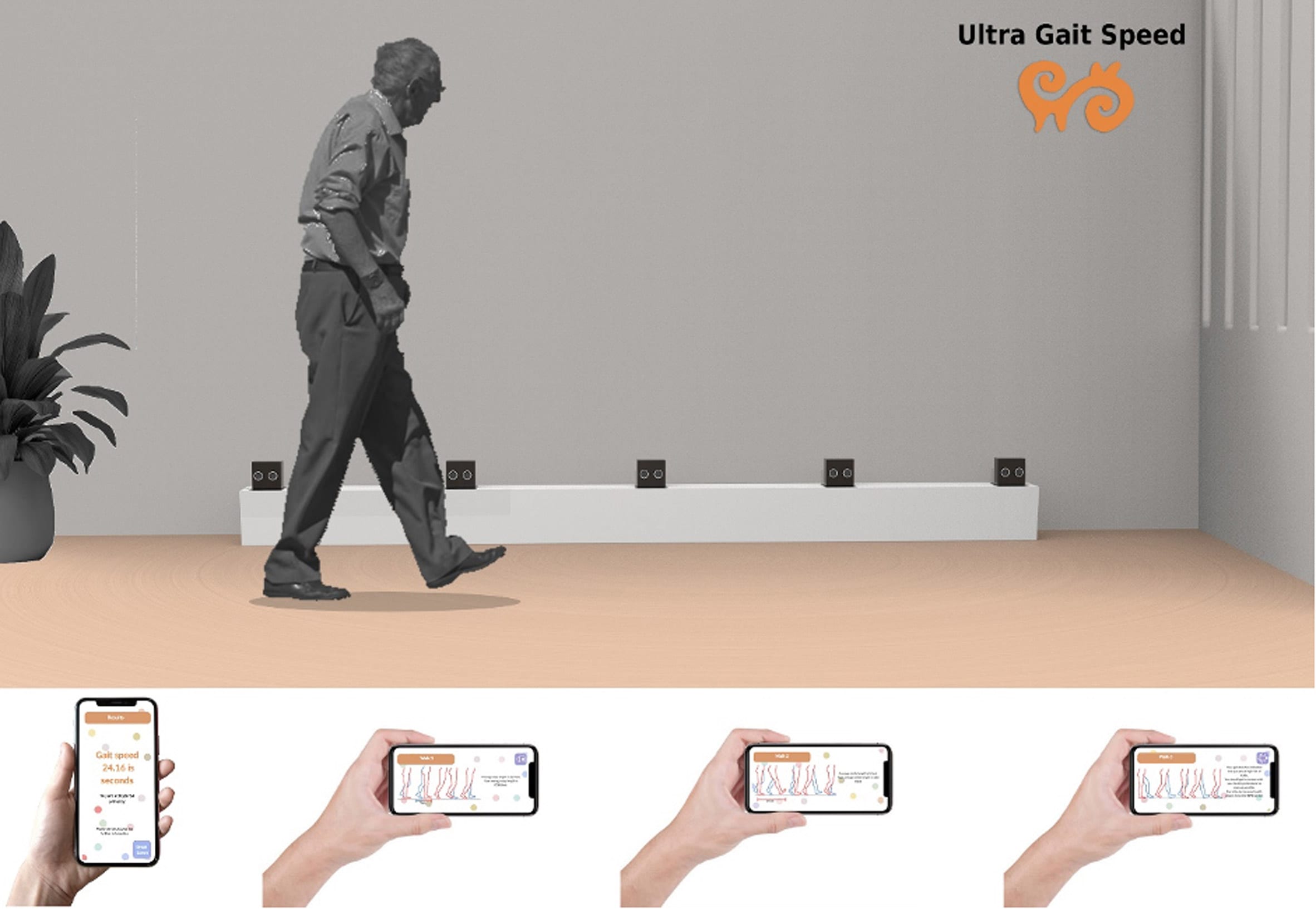
Ultra-Gait Speed by Demi Banjo
"Frailty is a geriatric condition. One of the main diagnosis methods is a Gait Speed Test, which measures how long it takes a patient to walk a distance of four meters.
"Ultra-Gait Speed is a home-based gait speed measurement device. An app accompanies the device and uses graphics to present the user with their results.
"The device allows patients to gain an understanding of their health. It enables frail and pre-frail patients to monitor their health, share data with medical professionals and make preventative interventions to delay the onset of geriatric frailty."
Student: Demi Banjo
Course: BEng Product Design Engineering
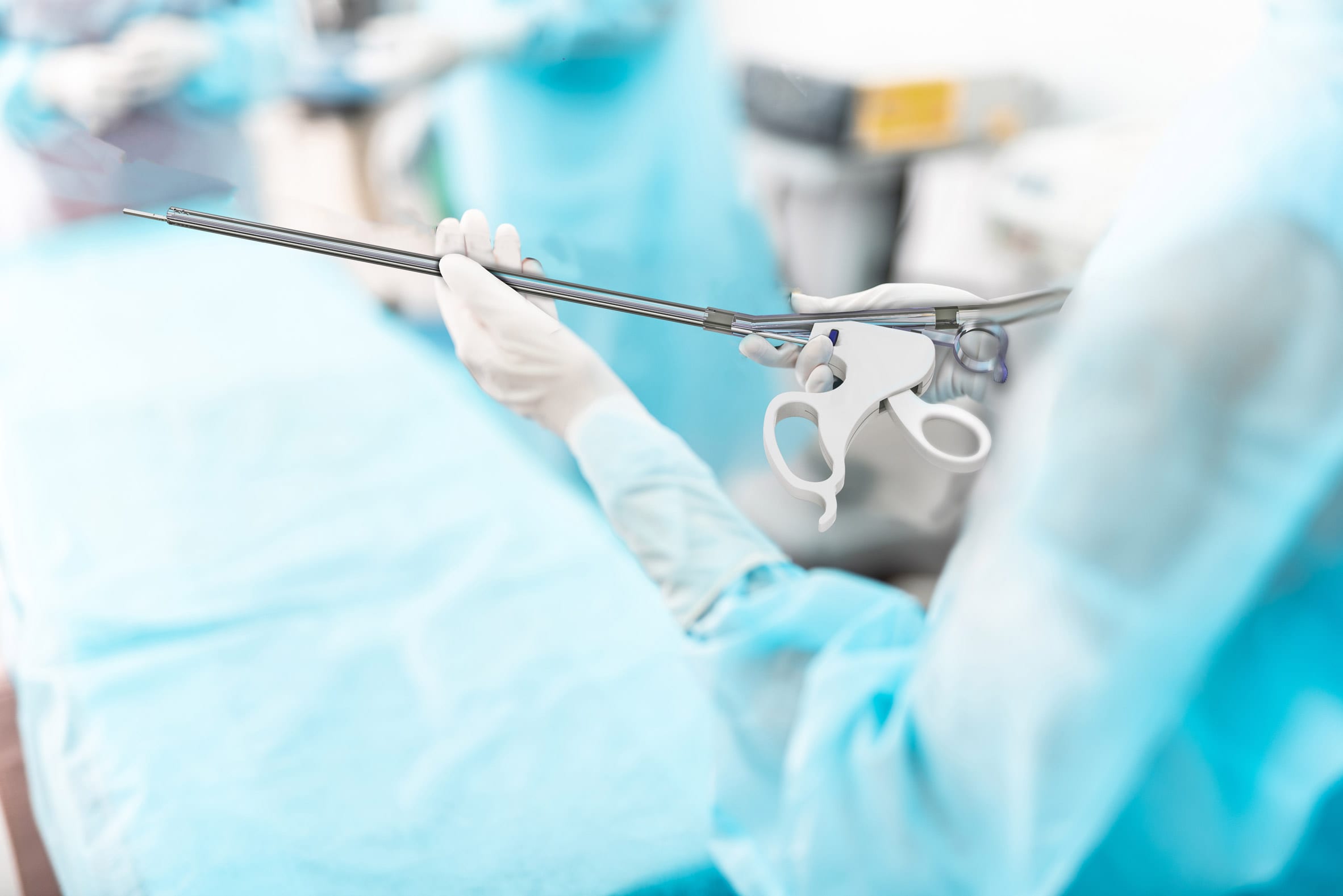
Laparoscopic Gallstone Removal System by Lazaros Efthymiadis
"Gallbladder perforation occurs in 36.1 per cent of patients who undergo laparoscopic elective cholecystectomy. Retrieving the lost gallstones is a stressful situation for the surgeons and significantly increases operation time.
"The Laparoscopic Gallstone Removal System gives the doctor the ability to quickly gather every stone using one device and avoid any potential blockages. The device breaks the big stones into smaller ones, removes them from the cavity using suction and stores them in a filter, protecting the operation room central suction device."
Student:Lazaros Efthymiadis **
Course:** BEng Product Design Engineering
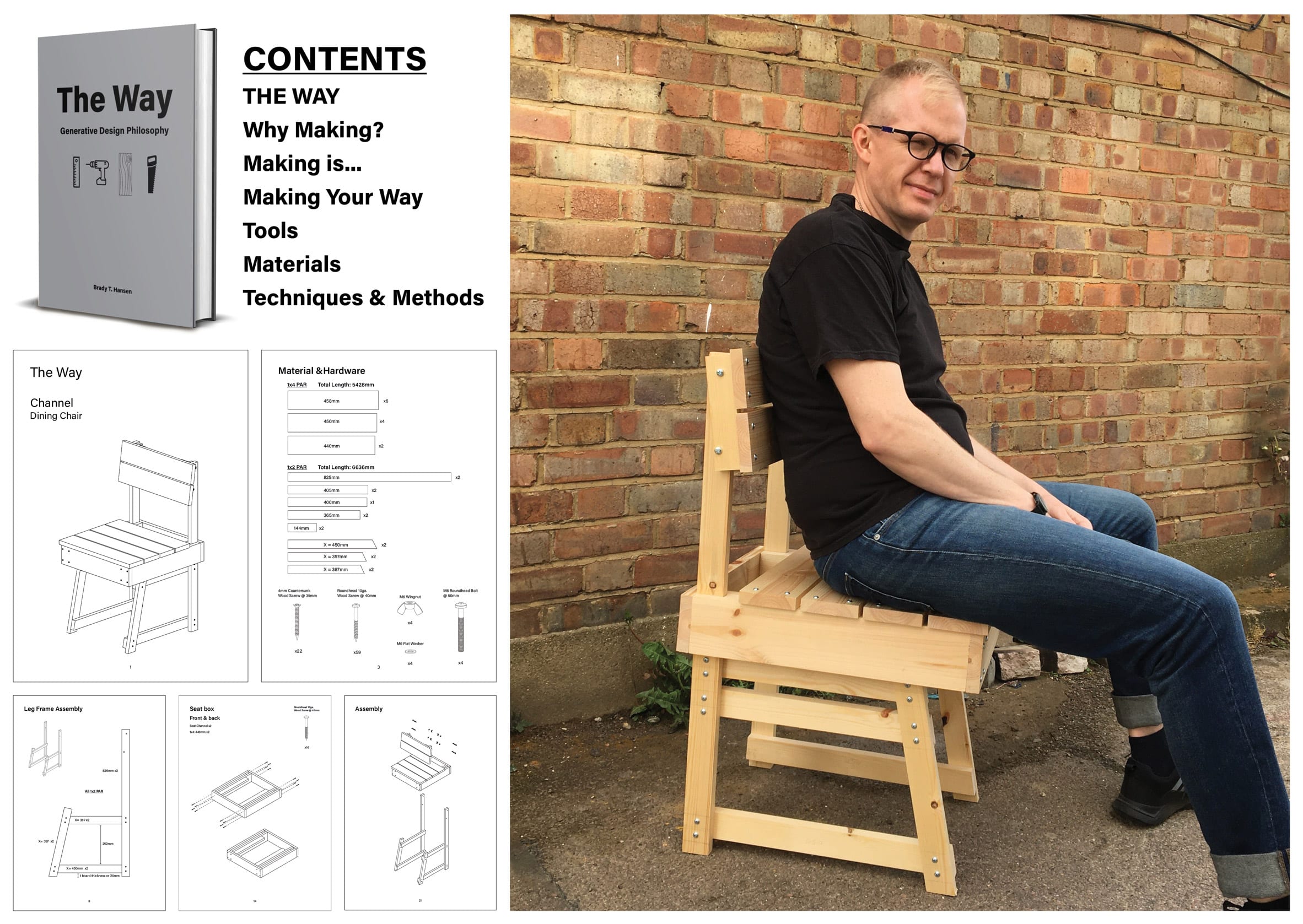
The Way: Generative Design Philosophy by Brady Hansen
"Fast furniture is having an irreversible impact on our planet, although many consumers have a desire to consume furniture more meaningfully.
"The Way provides a straightforward methodology using a simple set of tools to instruct people to make their furniture. Along with highlighting the positive impacts of making as a practice, The Way also gives guidance on making in small and shared living spaces, empowering any user to create rather than consume.
"The Way is a generative design philosophy designed to help people become makers and add more meaningfulness to their possessions."
Student: Brady Hansen **
Course:** BA Product Design ** **
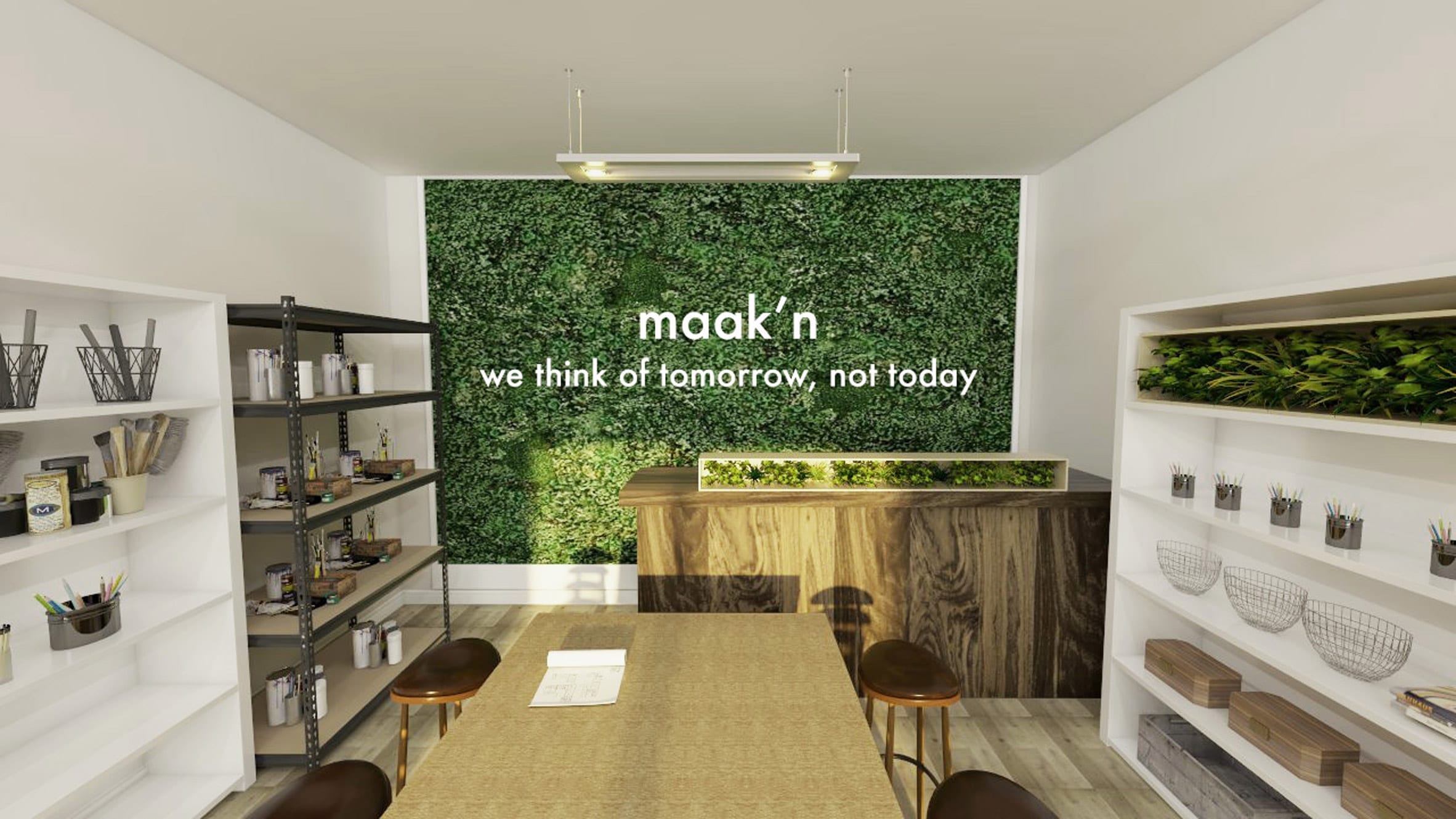
Maak'n by Basima Jaafar
"Maak'n is a stationery workshop that promotes and encourages active participation in sustainable, interchangeable and eco-friendly stationery. The workshop will create a new community for stationery lovers to make, customise and learn how we as consumers can change our habits and lifestyles to help improve the Earth through small and big steps."
Student:Basima Jaafar **
Course:** BA Product Design ** **
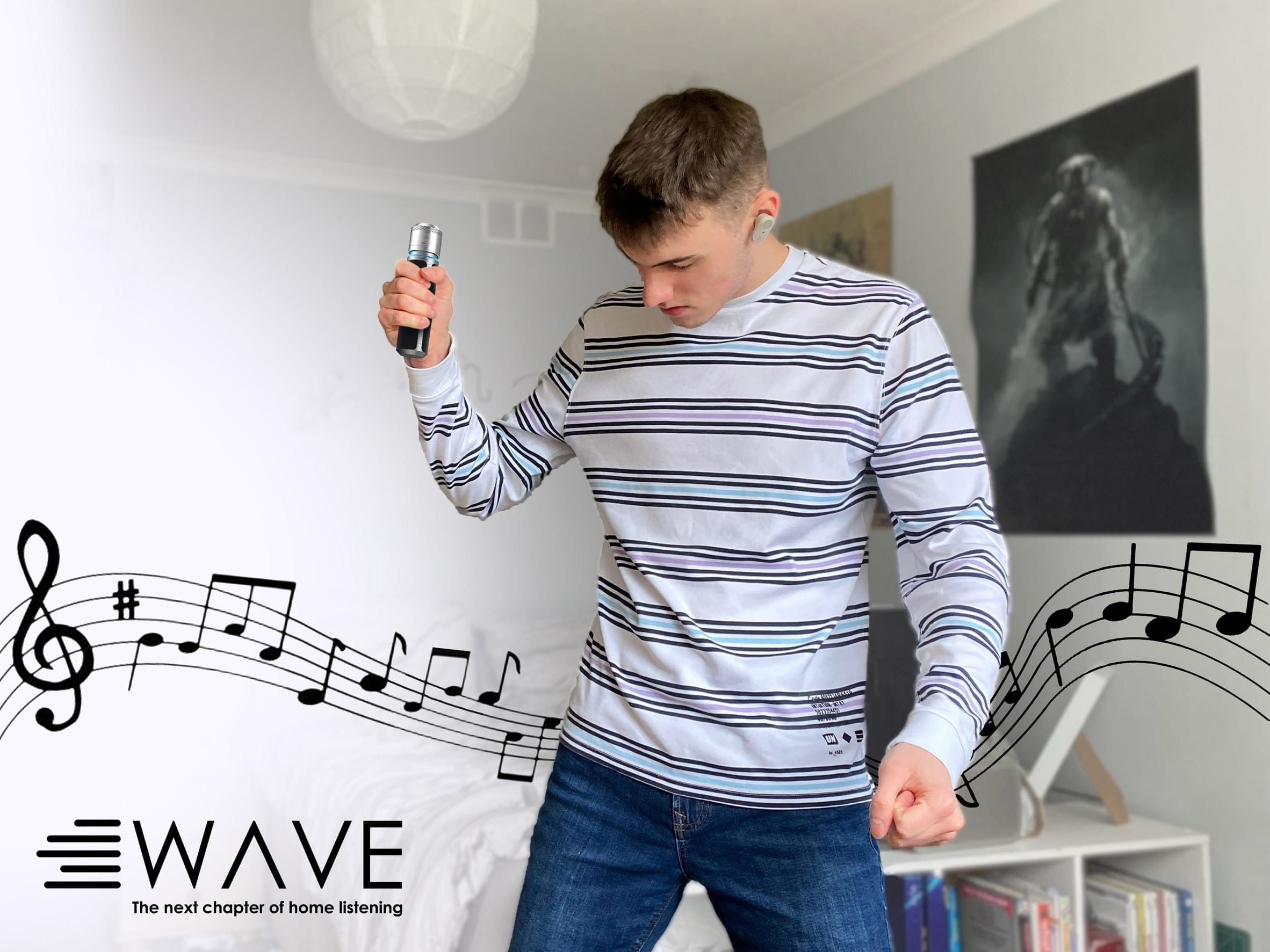
Wave: The next chapter of home listening by Tom Milward
"Music listening has faded into the background. Wave is a device that brings music back into the foreground, creating a mindful and enhanced listening experience.
"Wave helps users to induce a flow state, getting them into a relaxed state of mind so that the music becomes their focus. It will help users engage and immerse themselves, give them more control, and allow them to explore and interact with their music through various parameters.
"These parameters include reverb, band-pass filter and bass/treble, each controlled through different gestures. Additionally, wave connects to music playing applications on mobile devices via Bluetooth."
Student:Tom Milward **
Course:** BA Product Design ** **
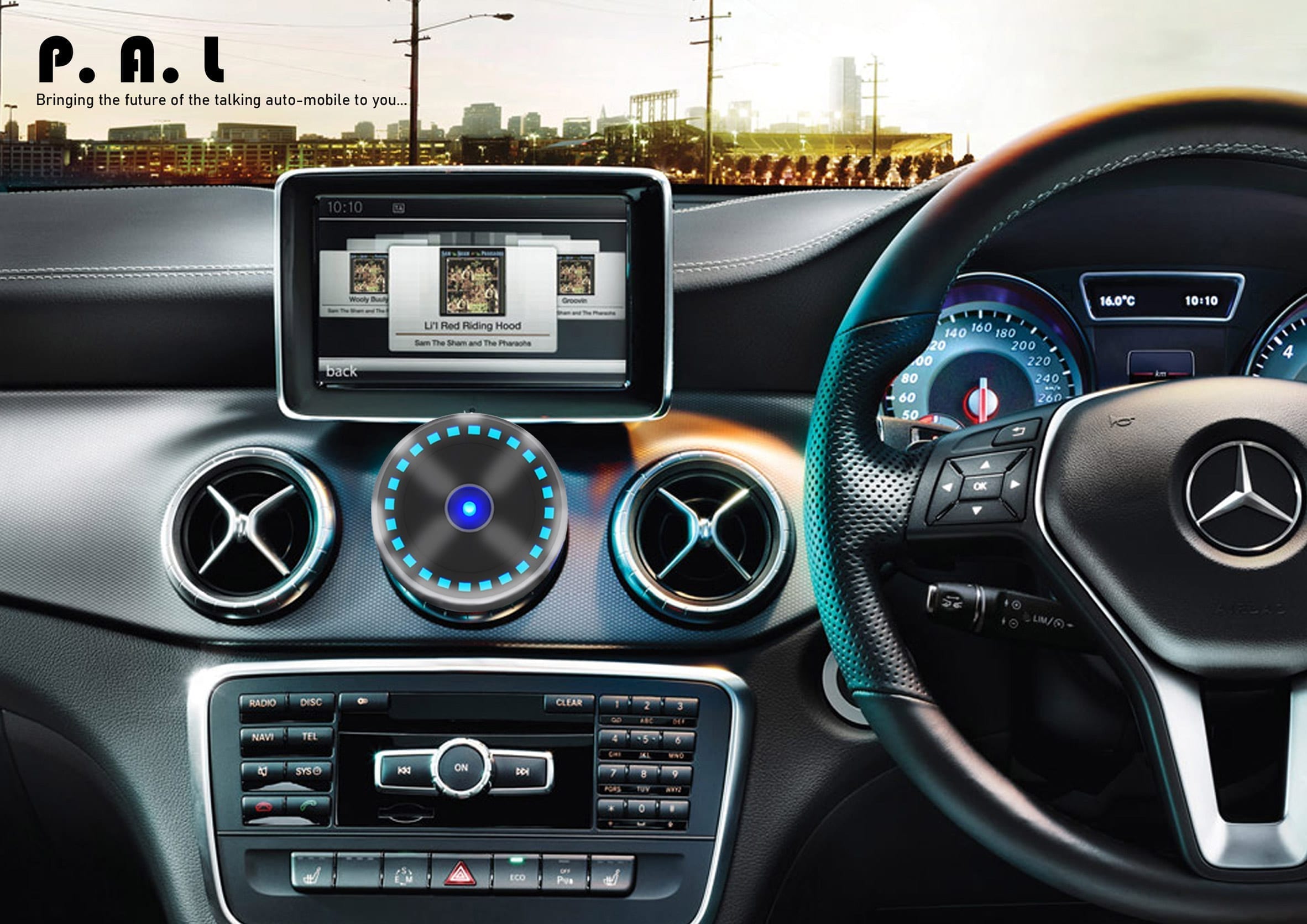
P.a.l: Bringing the future of the talking automobile to you by Ibrahim Javid
"Your car assistant from the future. A talking and living AI that communicates with the driver through audible suggestions and a visual light display.
"P.a.l gives you updates on your car's current performance, makes you aware of hazards around you, and gives you personalised updates on places to visit while travelling.
P.a.l provides comfort and companionship for those driving alone and enhances your driving experience."
Student:Ibrahim Javid **
Course:** BEng Product Design Engineering
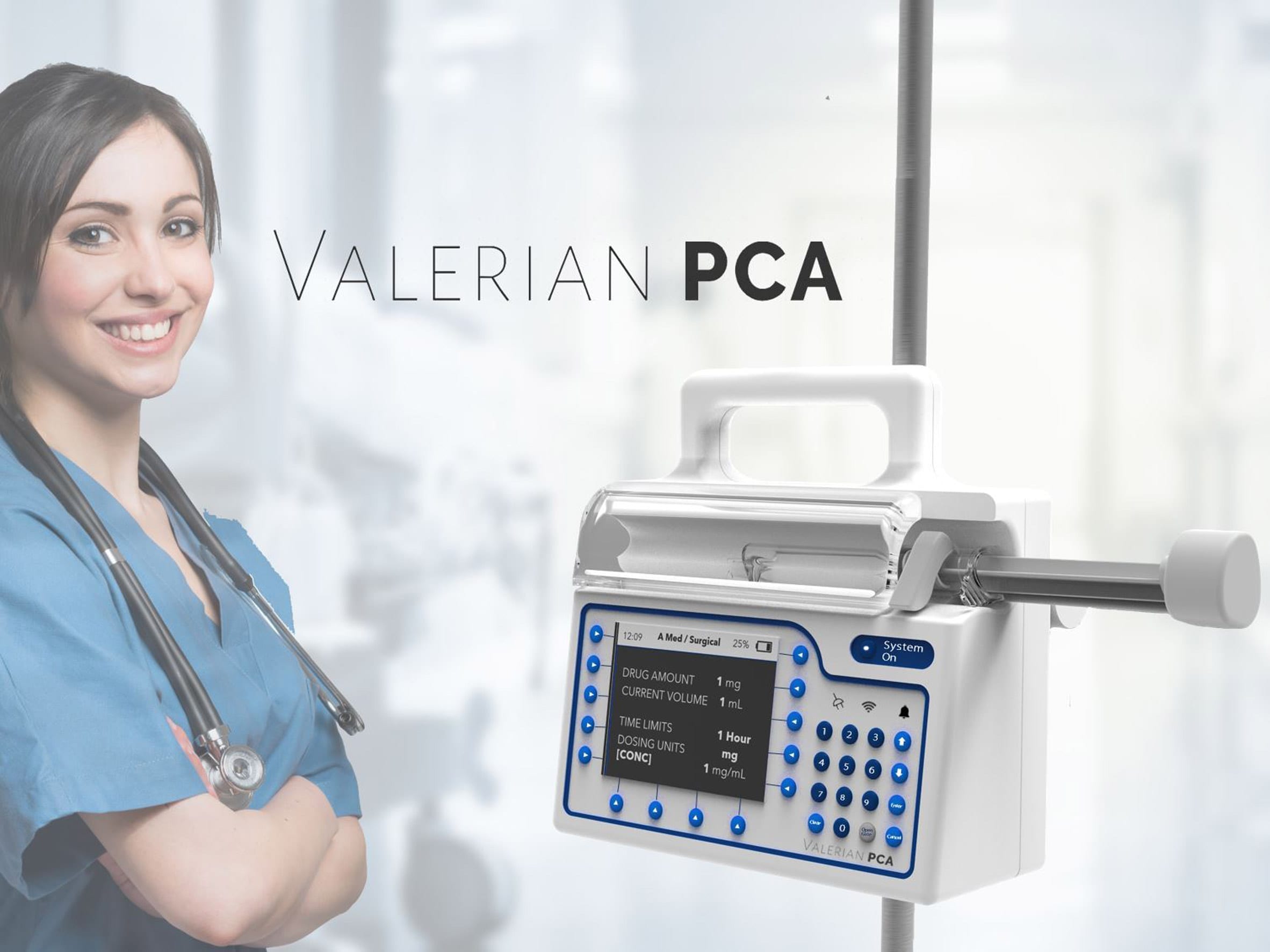
Valerian PCA Pump by Vanessa Mugari
"Valerian is a device that gives patients the power to control their pain through the simple press of a button. The computerized Patient-Controlled Analgesia pump (PCA) contains a syringe of pain medication prescribed by a doctor connected directly to a patient's IV line.
"Its user interface and simple programming steps significantly reduce the risks of human errors, which result in the overdose and underdose of patients."
Student:Vanessa Mugari **
Course:** BEng Product Design Engineering
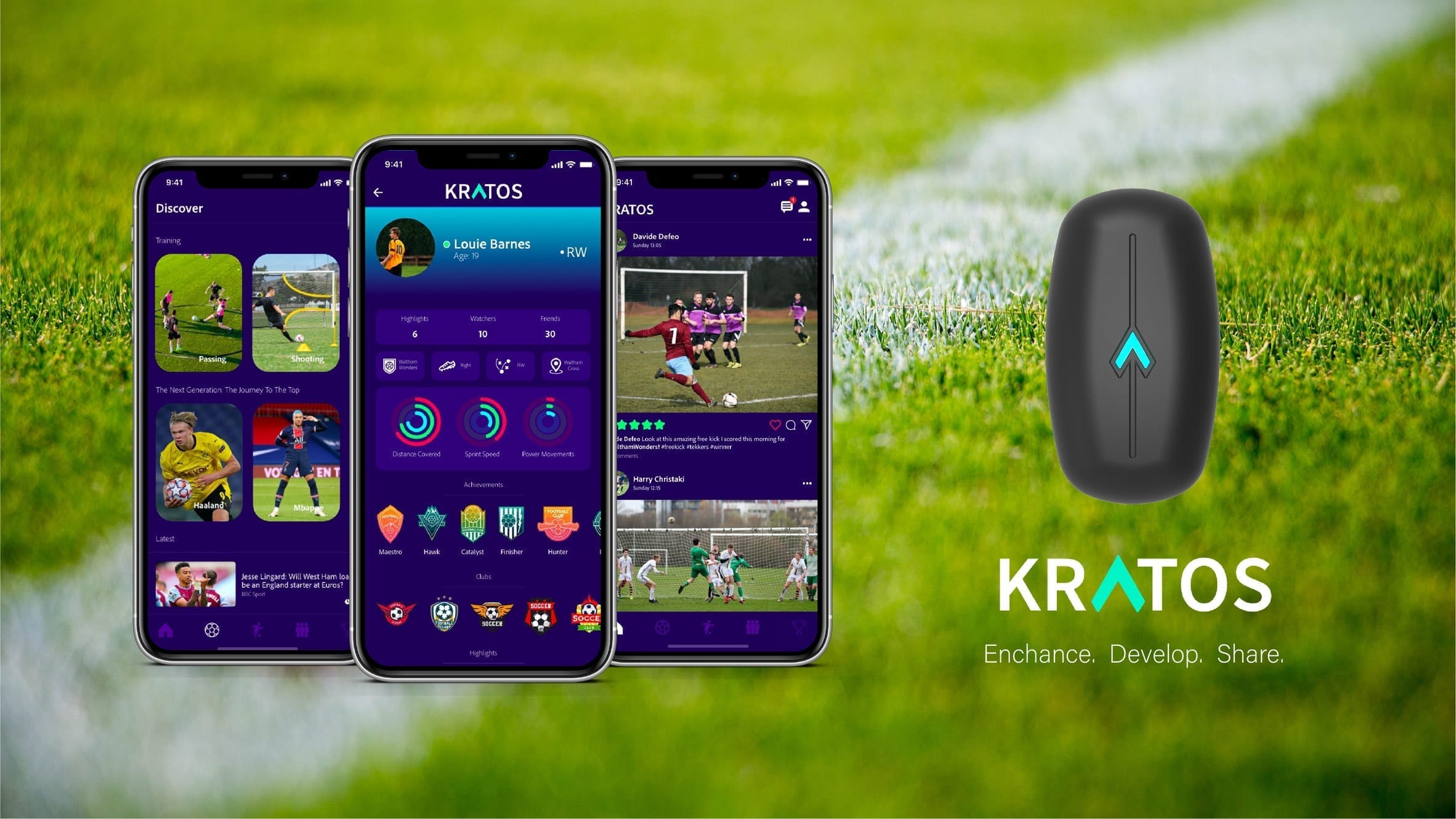
Kratos: Enhance. Develop. Share by Luigi Palumbo
"Football is becoming heavily data-driven – it's all about stats, and these can determine a player's success or failure. Pro-level players use this data to analyse performances, reduce injury and understand themselves as a player. Kratos makes this technology more affordable to the lower level and recreational players.
"The design is made up of a physical device located on the back. It will utilise community manufacturing approaches to lower the cost, making it more accessible to amateur players. In addition, the device will be accompanied by a social networking app that will allow players to share this data in meaningful ways."
Student:Luigi Palumbo **
Course:** BEng Product Design Engineering
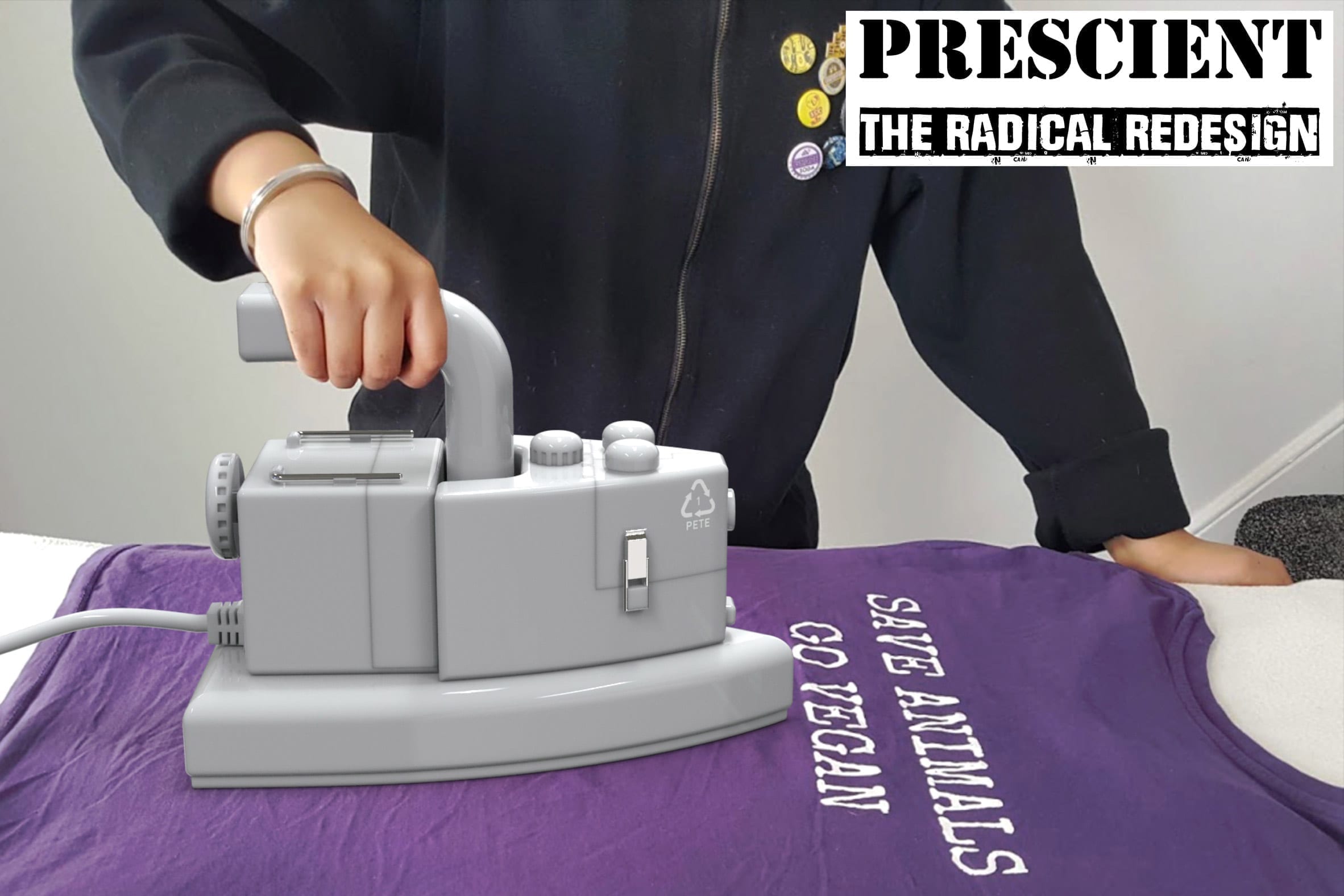
Prescient: The Radical Redesign by Navpreet Singh
"Revisioning our relationship and use of consumer products by designing for behaviour change: Prescient is a philosophy, a manifesto, a set of instructions, and a lens on sustainable living, all in one.
"It works to create meaningful, readable consumer products with cradle-to-cradle sustainable thinking embedded in every aspect of design and manufacture through a visual language that speaks directly of the underlying philosophy.
"The demonstration product – a clothes iron – illuminates that functional modularity of the product and helps users understand how to repair and replace any parts that fail over time, extending the lifecycle of the whole system."
Student:Navpreet Singh **
Course:** BEng Product Design Engineering
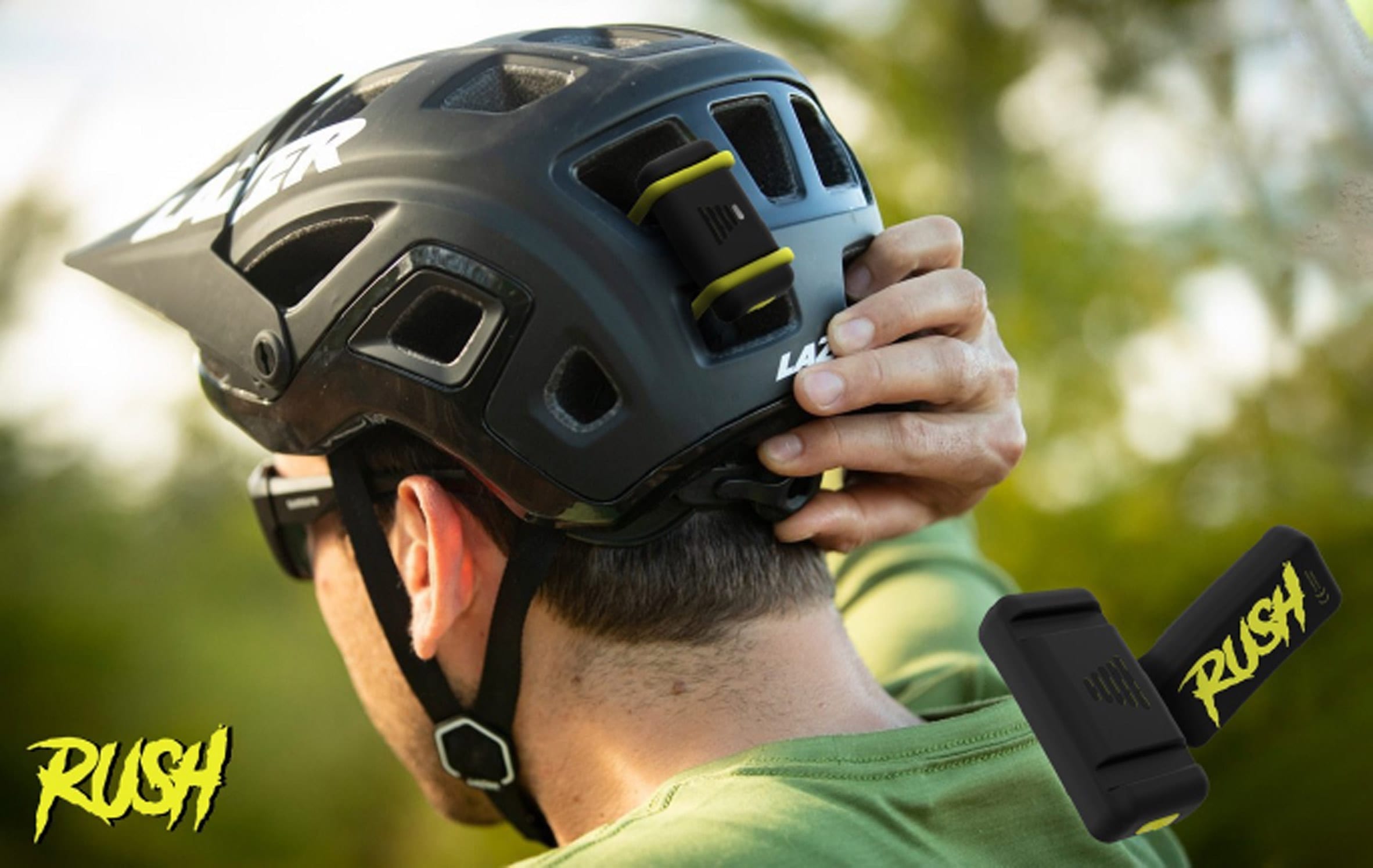
Rush: Explore Your Data by Ralph Pauling
"Rush uses accelerometer arrays to capture new forms of cycling data enabling underrepresented users to visualise and quantify their cycling exploits.
"Rush can measure 'air time', visualising the aerial ballet of a skilled BMX rider, cornering speed and banking angle achieved during a bike race, also known as a crit. Should a bike ride go a little pear-shaped, the design can tell the user if they may have suffered a concussion."
Student:Ralph Pauling **
Course:** BEng Product Design Engineering
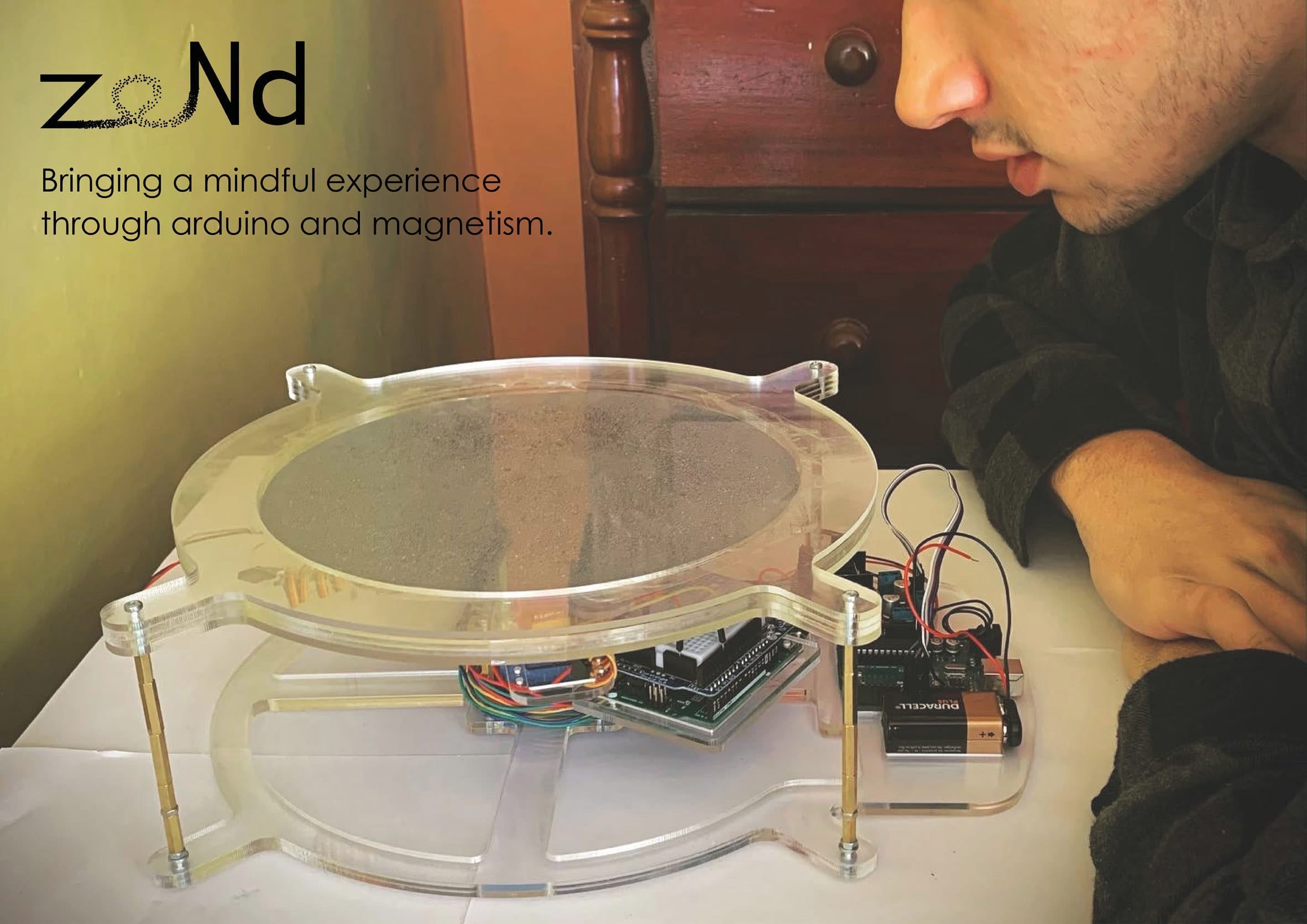
zeNd: Bringing a mindful experience through Arduino and magnetism by Joseph Salem
"This design asks: is play just for children? Once we reach adulthood, should we stop? Playtime, even for adults, has many benefits. ZeNd is a toy and construction kit for adults that provides a mindful experience using Arduino and magnetism, improving the user's wellbeing.
"The toy creates visuals on Iron filings – a metal powder – that react to magnetic fields. The toy creates a mindful experience by immersing the user in building the device and enabling them to feel 'in the moment' as they watch the playful patterns unfold, relieving stress and improving concentration."
Student:Joseph Salem **
Course:** BEng Product Design Engineering
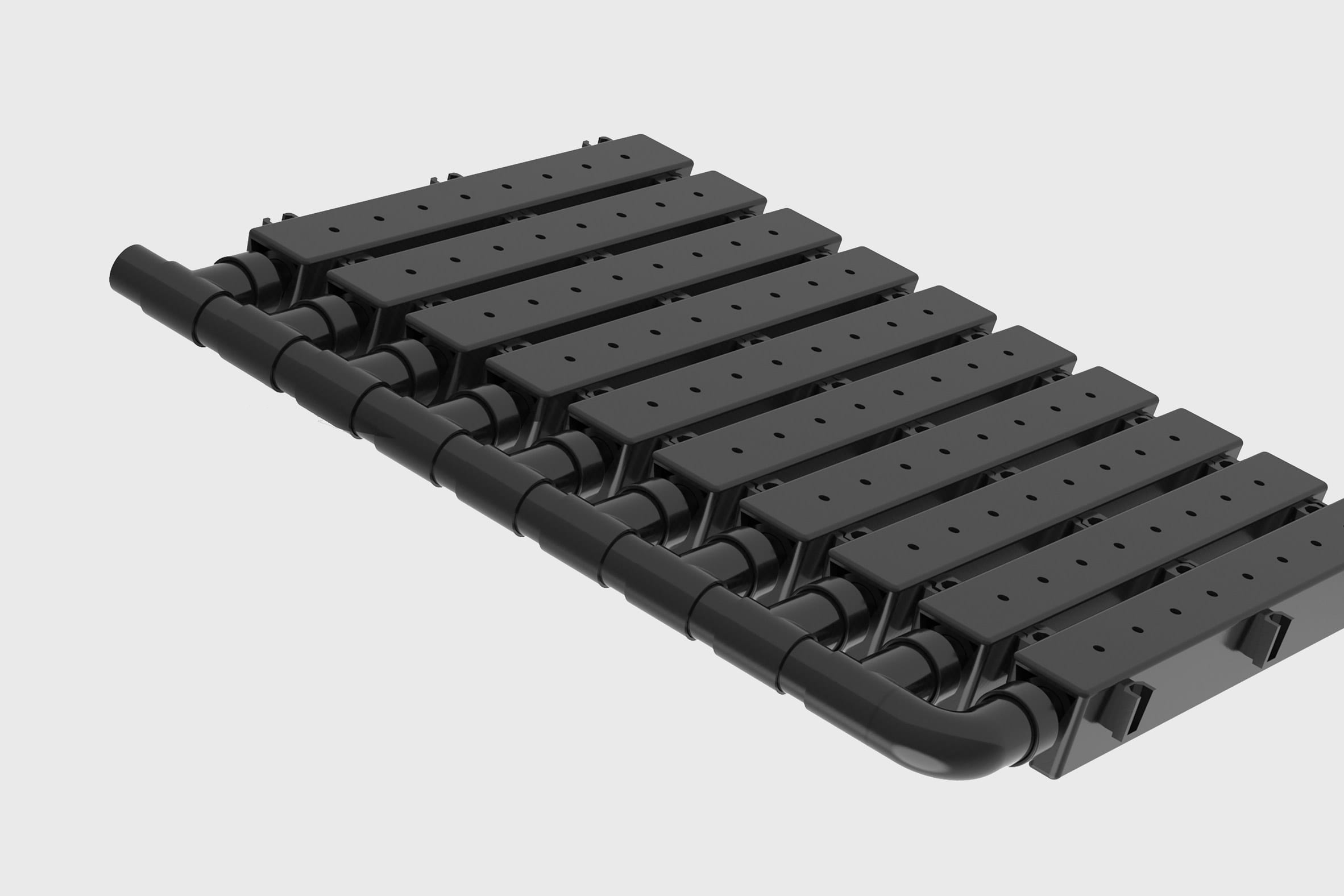
Smartbed: Innovative laser cutter vacuum bed technology by Sujinthan Sureshkumar
"Laser cutters have become the go-to machine for cutting a wide range of materials with speed and repeatable accuracy. Holding fragile materials can be difficult and involves typically expensive and inefficient vacuum beds.
"This new bed provides a 'smart', efficient and cost-effective way to hold thin sheet materials on small laser cutters using an innovative air-flow and valve matrix."
Student:Sujinthan Sureshkumar **
Course:** BEng Product Design Engineering
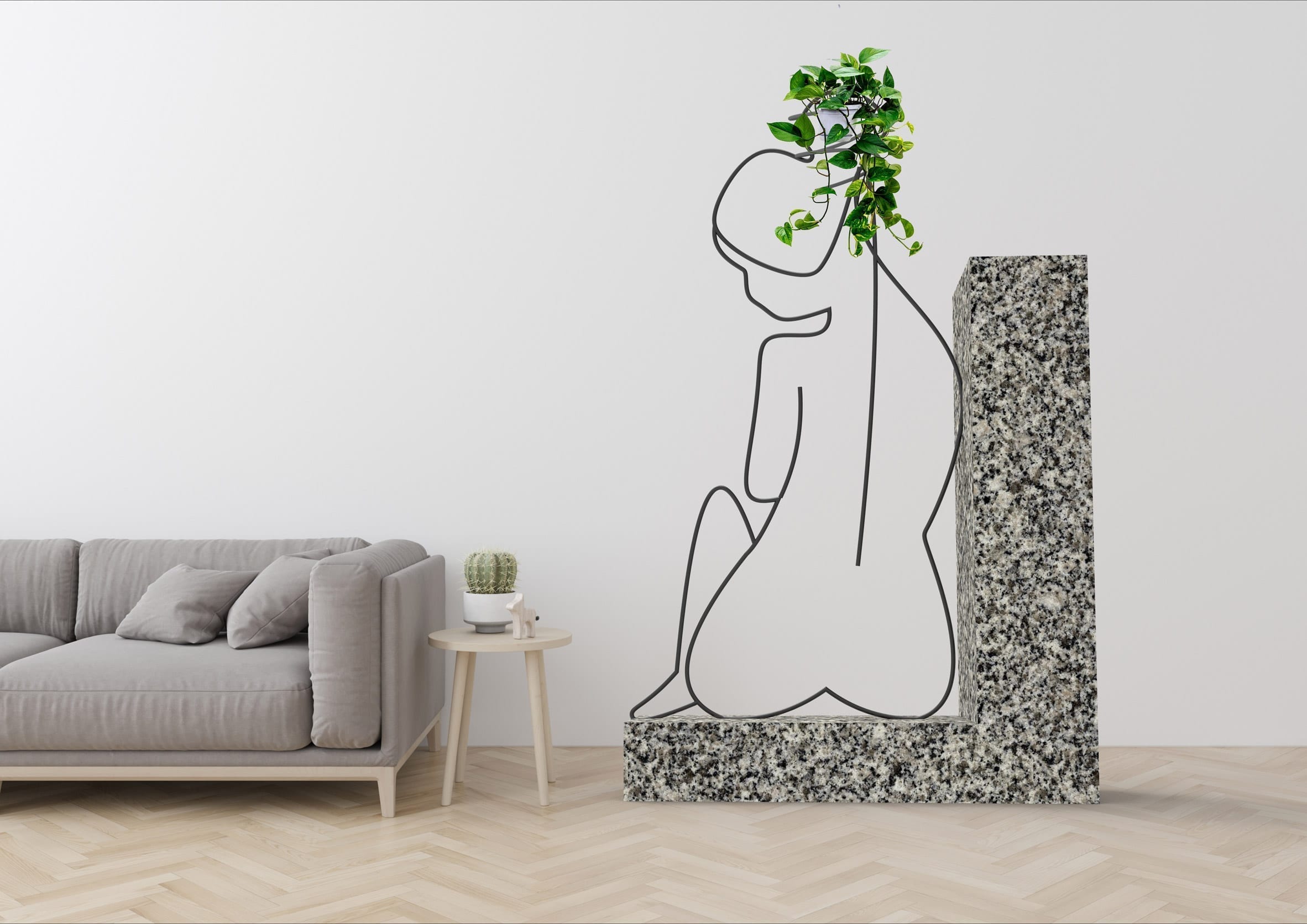
Self-growing Art by Eliska Ticha
"Plants and flowers have a positive effect on our mental health and help refresh our internal environments. Their ever-changing growth and beauty are enhanced through their inclusion in Self-growing Art, where plant life meets 3D illustration.
"The system, designed for custom installations, has a secure mounting and watering system as part of the construction. A continuous, fluid line provides the illustration, with growing plants symbiotically enhancing the symbolism."
Student:Eliska Ticha **
Course:** BA Product Design
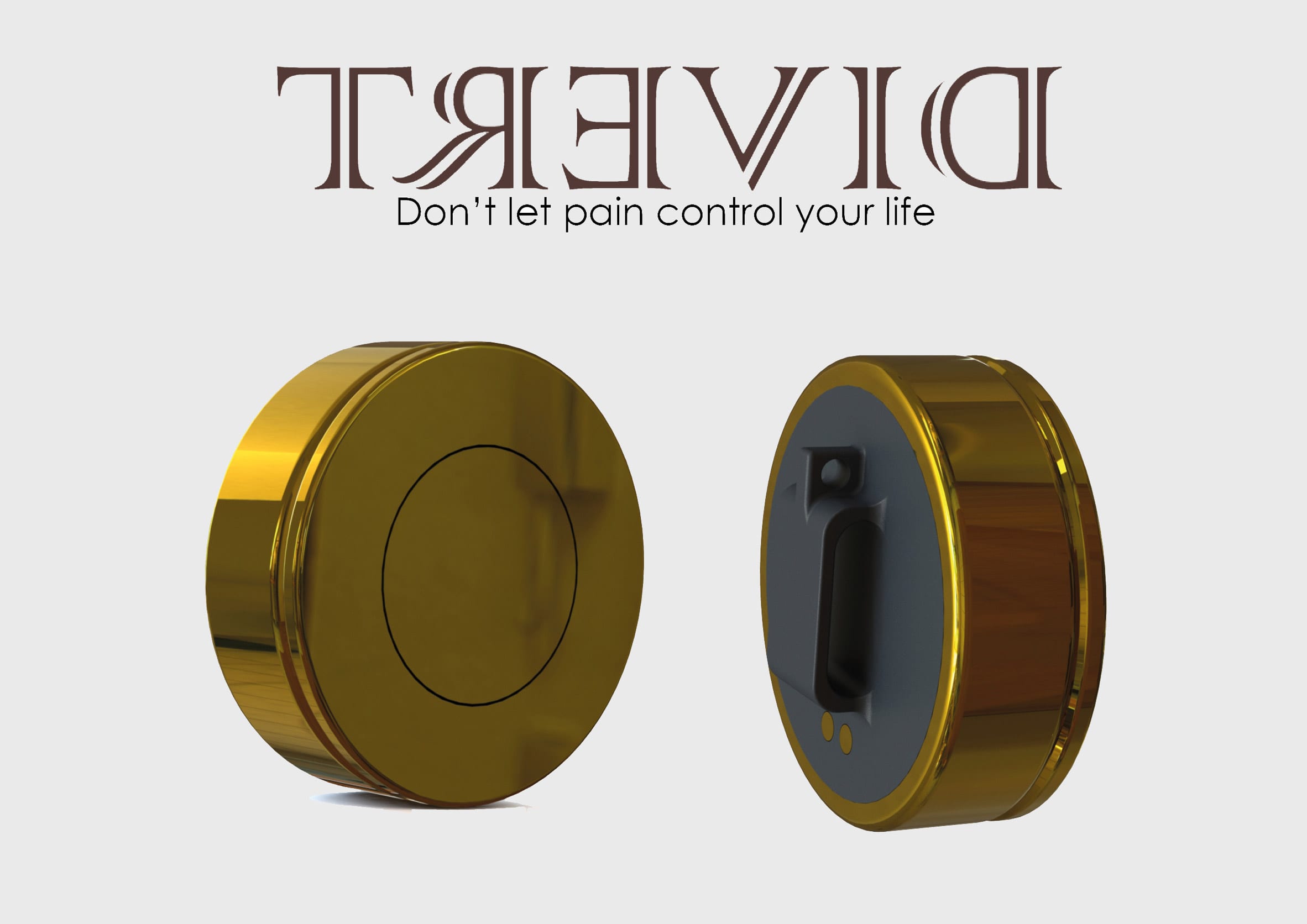
Divert: Don't let pain control your life by Elizabeth Whittall
"Divert is a new way for chronic pain sufferers to relieve their pain through distraction, in everyday settings, without drawing attention to the sufferer or distracting others around them. Divert uses haptic feedback to create different 'call and response games' between the user and the product to reduce pain.
"It could be used during a meeting, in educational settings, social gatherings, etc. When the user experiences pain symptoms, rather than leaving the room or distracting others, they can push down on the device and initiate the subtle distraction 'games'. Divert is a 'core and shell' system enabling the core to be worn as a bracelet, necklace, or keychain."
Student:Elizabeth Whittall **
Course:** BA Product Design
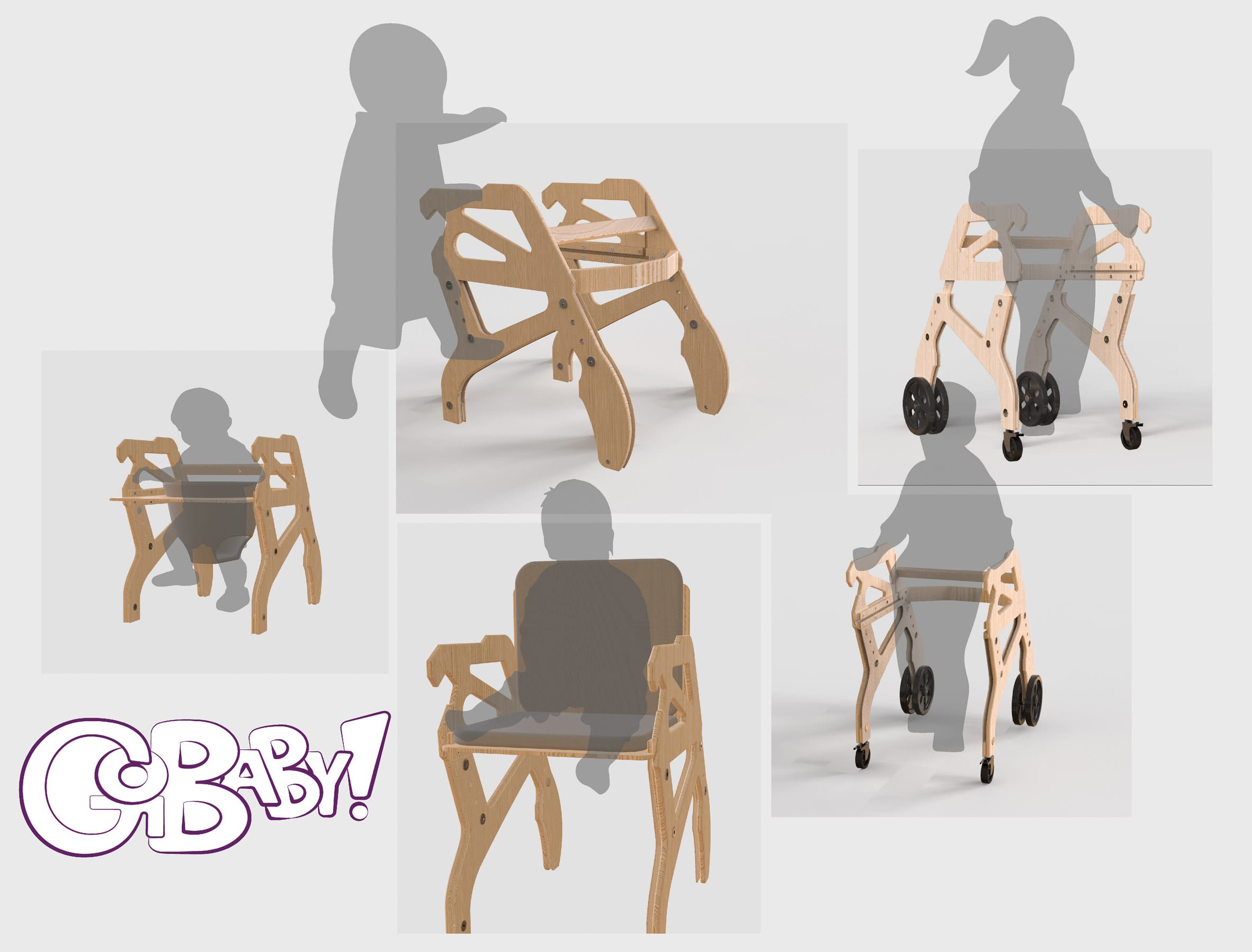
GoBaby by Jerusa Da Silva
"GoBaby! is a multifunctional piece of furniture for children with down syndrome and other additional needs. GoBaby! transforms into three products: a walking frame, a baby exersaucer and a chair, giving the child the opportunity to improve their gross motor skills in the comfort of their own home and at their own pace.
"GoBaby! will accompany your child as they grow, offering independence and supporting them in reaching key developmental milestones from six months to five years of age."
Student:Jerusa Da Silva **
Course:** BA Product Design
Partnership content
This school show is a partnership between Dezeen and Middlesex University. Find out more about Dezeen partnership contenthere.
The post Middlesex University unveils 15 projects from product design and engineering students appeared first on Dezeen.
#furniture #all #transport #design #products #technology #homeware #schoolshows #productdesign #designsforchildren #football
